33.1a Protect Your Family From Lead in Your Home Pamphlet
Chapter 33 - Environmental Issues
Learning Objectives
At the completion of this chapter, students will be able to do the following:
1) List at least two examples of materials where asbestos may be found.
2) Describe at least one way in which radon can enter into a house.
3) Provide at least one scenario which may lead to mold growth in a house.
33.1 Lead Poisoning
Transcript
What is lead?
Lead is a naturally occurring element found in the earth which was widely used in applications before it was discovered to be toxic to people and animals. It was present in pipes, plumbing, batteries, cosmetics, and in the paints of older homes, and can be found in the air, water, and ground. The contamination has created health problems for people all over the world, and the World Health Organization (WHO) considers lead to be one of the ten chemicals that pose a major public health concern. While there is no level of lead exposure that is believed to be safe, getting lead poisoning is avoidable.
Where can lead be found?
Major sources of contamination originated in mining and manufacturing. Surprisingly, recycling has reintroduced lead into the global environment. Some commercial products such as computers, jewelry, and bridge paint might still contain lead today. Even everyday items like makeup or hair coloring can contain lead.
How does this affect property?
In homes and buildings built before 1978, lead-based paint was typically used and can present a potential hazard. Lead can leak into water through lead pipes and fixtures, generally found in older buildings. The grounds around a building dating before 1978 could also be contaminated.
While lead can be found in food or water, determining that something is contaminated can be challenging because the contamination cannot be tasted, smelled or seen.
Why is lead hazardous?
While the presence of lead can harm all living things, children are especially vulnerable. According to the Centers for Disease Control and Prevention (CDC), four million households with children have high levels of lead and about 500,000 children in the United States between one and five years of age have lead in their blood at levels high enough to recommend a public health action.
Children can consume soil that’s contaminated or inhale the dust due to the fact that kids put everything in their mouth. However, the most common way children are exposed to lead poisoning is by lead-based paint. When they eat or inhale the contaminated lead they absorb more into their systems, as much as five times as much as adults, because they’re more sensitive to it.
Developing fetuses can also be affected by the presence of lead hazards, causing preterm labor or miscarriages. If the baby survives it might have a low birth weight and other problems later on.
In the home, a child can be poisoned by lead dust generated by deteriorating, flaking lead-based paint in amounts as small as just three grains of sugar. The homeowner might not have even realized it was there, if it had been covered over by new paint or wall coverings. The home could look clean and lovely but still contain deadly lead paint.
When it gets into the body, lead travels to the brain, bones, kidneys, and other internal organs. Even when exposure levels are not high, there can still be an impact. Studies done on children showed the exposures that were previously thought to be safe could cause damage to IQ and increased behavioral problems, which are considered irreversible.
Lead exposure generally has no visible symptoms. Evidence of lead poisoning in children might be learning disabilities, developmental delays, loss of appetite, abdominal pain, sluggishness, and harm to the nervous system. Unfortunately, by the time symptoms are noticeable, the damage has already been done. The long-term impact of lead poisoning in children can result in a high rate of school drop-outs, and a greater chance these children will be involved in the juvenile justice system.
Adults can be exposed to lead through their jobs, such as auto repair, construction, manufacturing, refining, or lead smelting. Home remodeling, which stirs up the old lead-based paint, can contribute to lead poisoning. Artists who work with pottery, stained glass, or soldering are exposed to lead, and the dust and fumes from lead oxide can be inhaled.
Continued exposure to even small quantities of lead can create chronic toxicity, as the lead contamination can infiltrate the body and create problems throughout. Adults with lead poisoning have increased mortality, a higher rate of cardiovascular disease, problems with reproduction, and depression, among other things.
What can be done about lead-based paint in the home
There are two ways lead-based paint is discovered and handled. One is through renovation, repair, and painting (RRP) and the other is abatement. The biggest difference between them is that RRP activities are usually set in motion by the homeowner, usually for repairs or updating the home, not primarily for lead-based paint remediation. When the contractor begins work they can disturb the lead-based paint, stirring up potential lead hazards, and there are strict guidelines that must be followed. That’s why the individual and the company must be certified under the EPA RRP Certification and Training Program. Abatement is the permanent removal of the lead-based paint and the companies or individuals working on it must also be certified. The EPA regulates abatement differently than RRP, even though they might appear to be the same activity. In both cases, the proper procedures have to be in place.
Obligations of the real estate agent
When a real estate agent is representing a seller, both the seller and the agent are required by federal law to comply with the Real Estate Notification and Disclosure Rule. The Residential Lead-Based Paint Hazard Reduction Act of 1992 (LBPHRA), also known as Title X, was passed to protect people from the dangers of lead exposure that can occur from dust, soil, and paint. Because of this both Housing and Urban Development (HUD) and the Environmental Protection Agency (EPA) require disclosure of all information known about lead hazards, which are most often found in homes built in 1978 and before. It is the responsibility of the real estate agent to inform the seller of what’s required and make sure the seller does what’s needed.
This disclosure includes a pamphlet, Protect Your Family from Lead in Your Home, describing how to identify and control lead-based paint hazards, which is given to the buyer by their real estate agent.
This pamphlet, and the updates that were required in response to the EPA’s 2008 Renovation, Repair, and Painting Rule, contain advice that all repairs should be done by EPA- or state- approved Lead-Safe Certified renovation firms, not the homeowner. The Lead-Safe Certified renovators use approved work practices such as containing the work area, using HEPA vacuum attachments and disposing of the waste correctly.
The seller must produce any records or reports about lead-based paint or related hazards, and a Lead Warning Statement is to be included with the purchase paperwork along with verification that the seller has followed the regulations. The sellers should keep a copy of their disclosures for a minimum of three years after the sale.
The buyers will have a 10-day period of time when they can get a risk assessment or a paint inspection, but they can waive this if they choose. The only way to determine if there is lead in the drinking water is to have it tested.
If an assessment is done and contamination is found the local environmental protection agency can provide guidelines on proper handling and removal of the problem, as well they explain the laws that apply to the situation.
How does this affect the sale of property?
Let’s say a real estate agent is handling the sale of a pre-1978 home. The sellers are anxious to sell and when the agent describes the requirements of the disclosure, the sellers do not want to fill out the form. They’re worried that the sale won’t go through if information that old lead paint was used comes out.
The real estate agent wants the sale to go through, of course, and sympathizes with the sellers. However, the law is clear. All known information must be disclosed to the buyer.
The sellers agree to comply and the buyers use the available 10-day period to get testing done.
If the agent represents the buyer, a home-inspection contingency should be part of the offer so the buyer can have the property inspected by a home inspector. After going through the house, the inspector provides a report on what was found, and if there are problems that need further research, a specialist can be called in. These contractors must be certified, and when working on a large project they also have to provide the homeowner with a pamphlet, called The Lead-Safe Certified Guide to Renovate Right, published by the EPA, which describes the hazards of lead.
Once the issues are defined, for example, if lead paint has been discovered under the current paint, there can be negotiations between the seller and buyer to solve the problem. A post-remediation inspection will be done to make sure the problem has been eliminated.
Regardless of which party the agent is representing, when the buyers complete their due diligence and the sale concludes, you, as the agent, can rest easy knowing the rules were followed, the requirements were met, and you did right by your client.
Key Terms
Lead
A material used in pipes and paint of many older homes. We now know that lead is hazardous to health. The local environmental protection agency should be consulted for guidelines on handling, removal and applicable laws.
33.1a Protect Your Family From Lead in Your Home Pamphlet
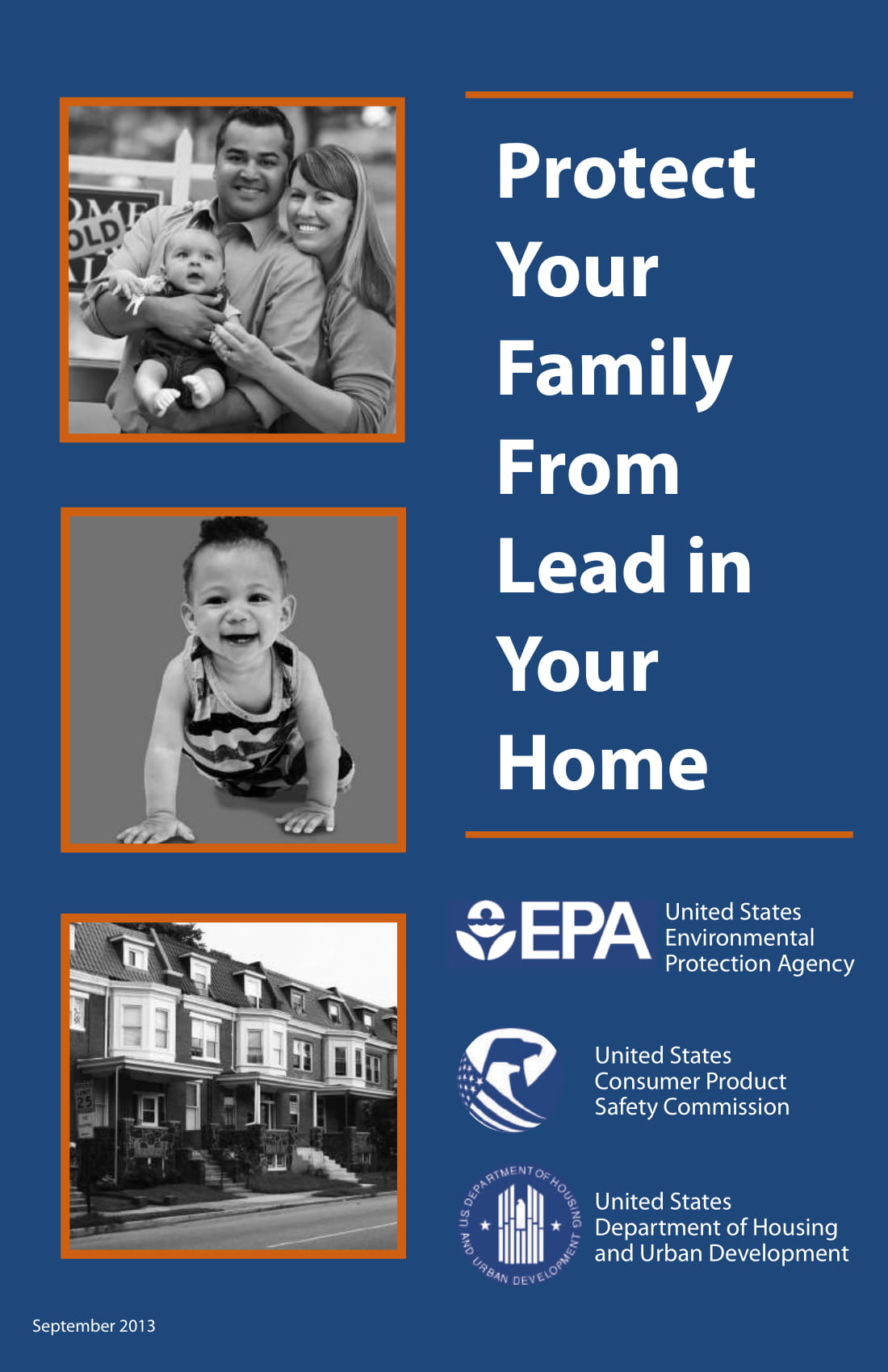
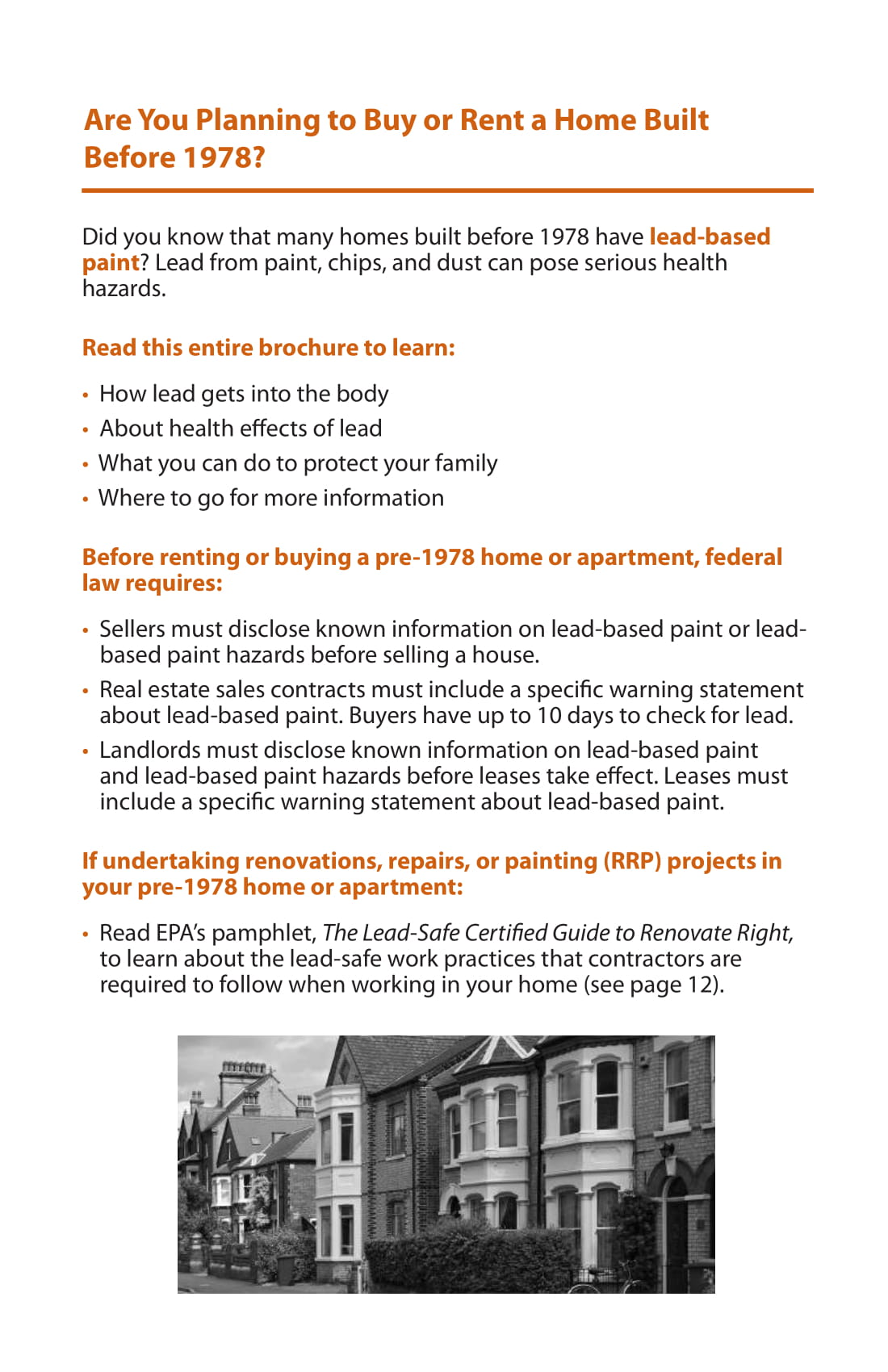
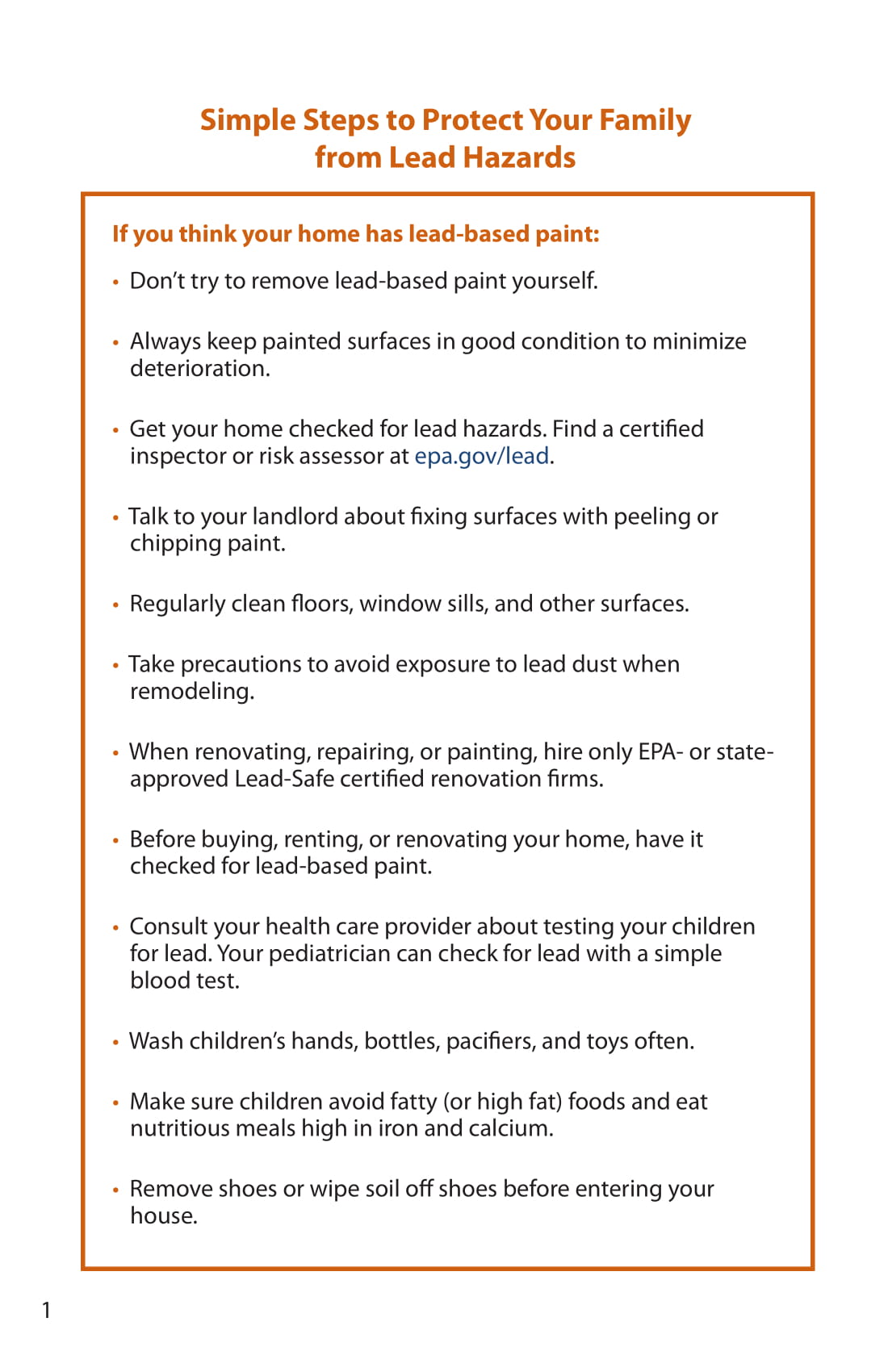
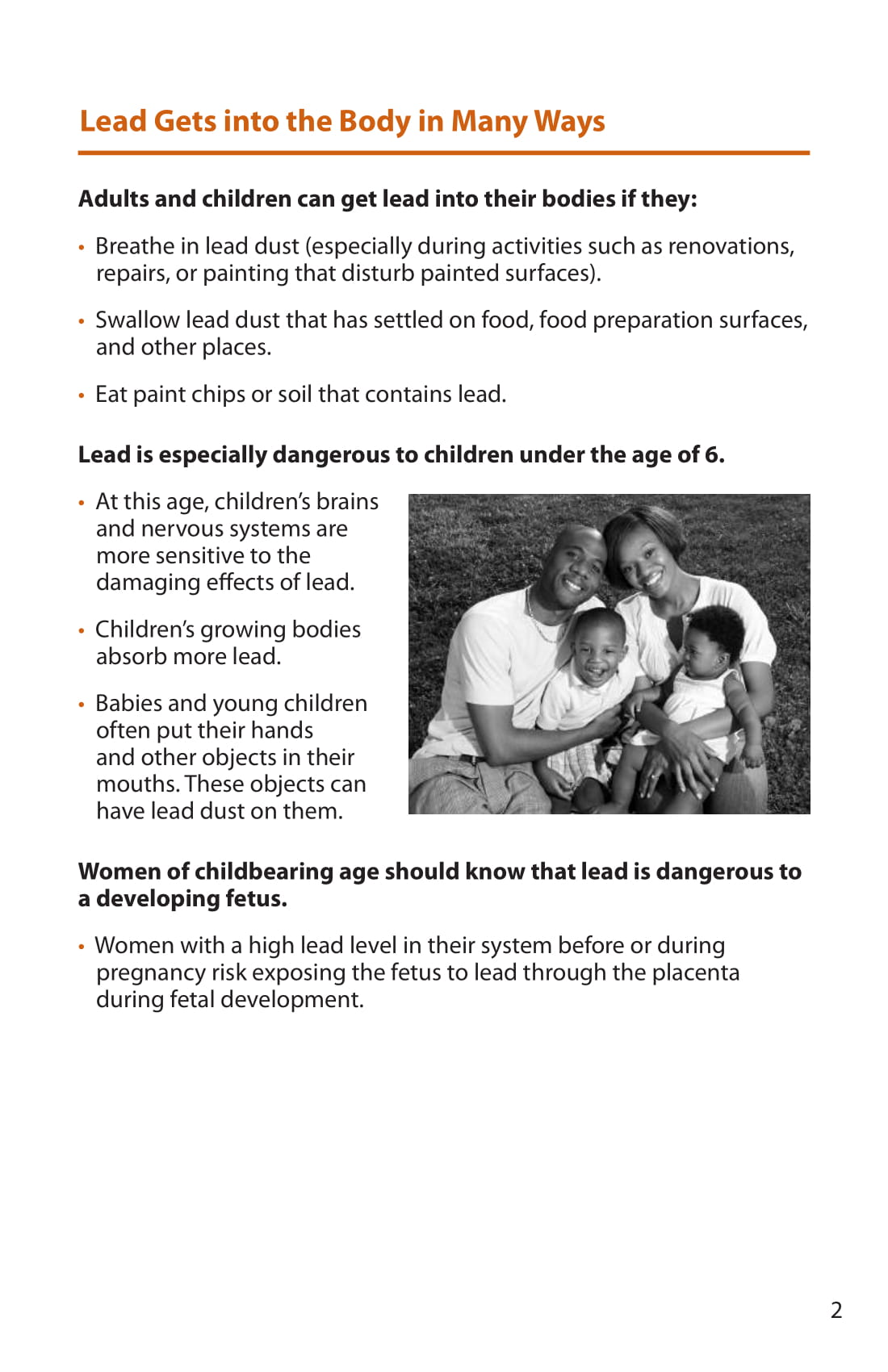
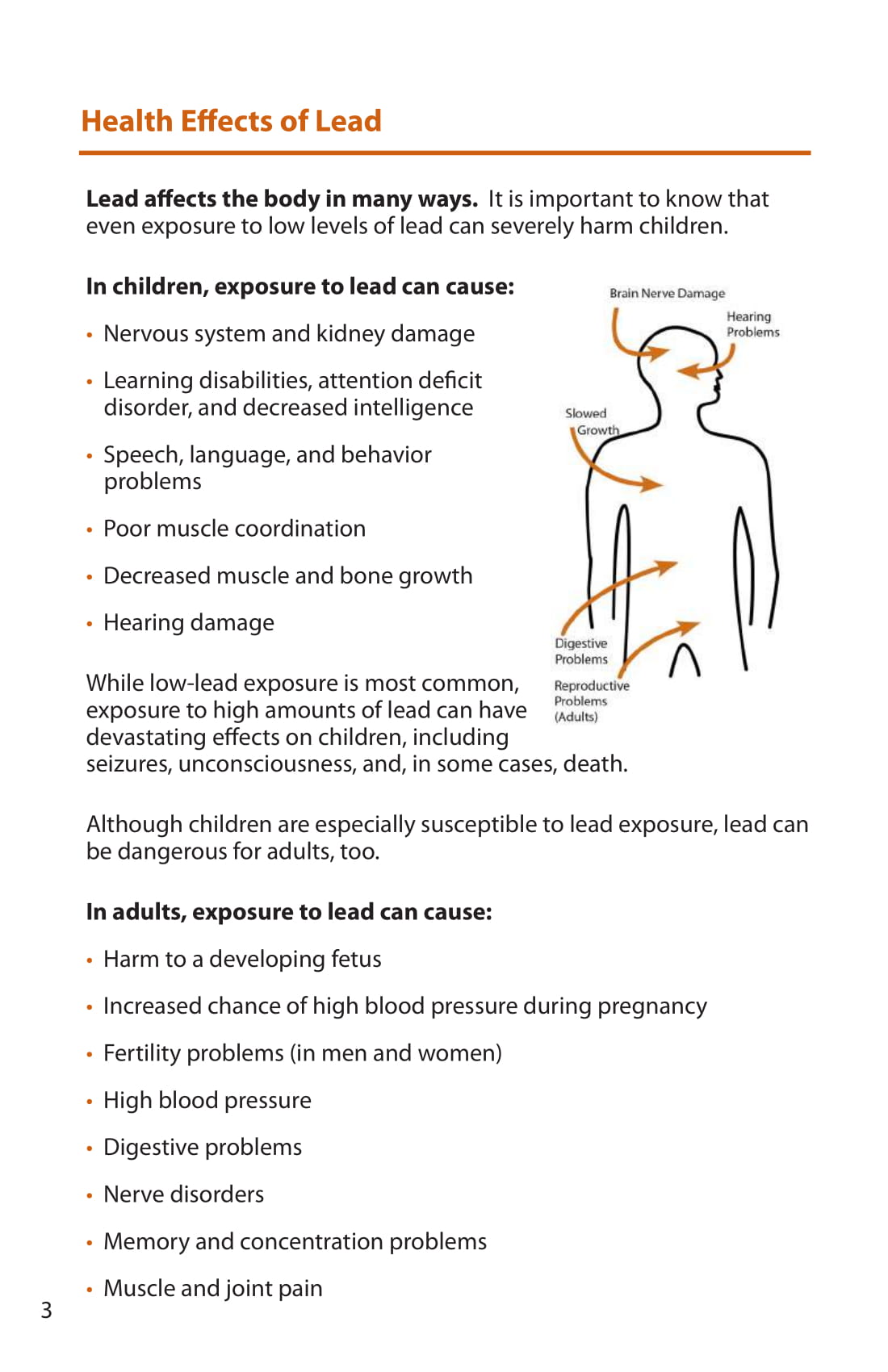
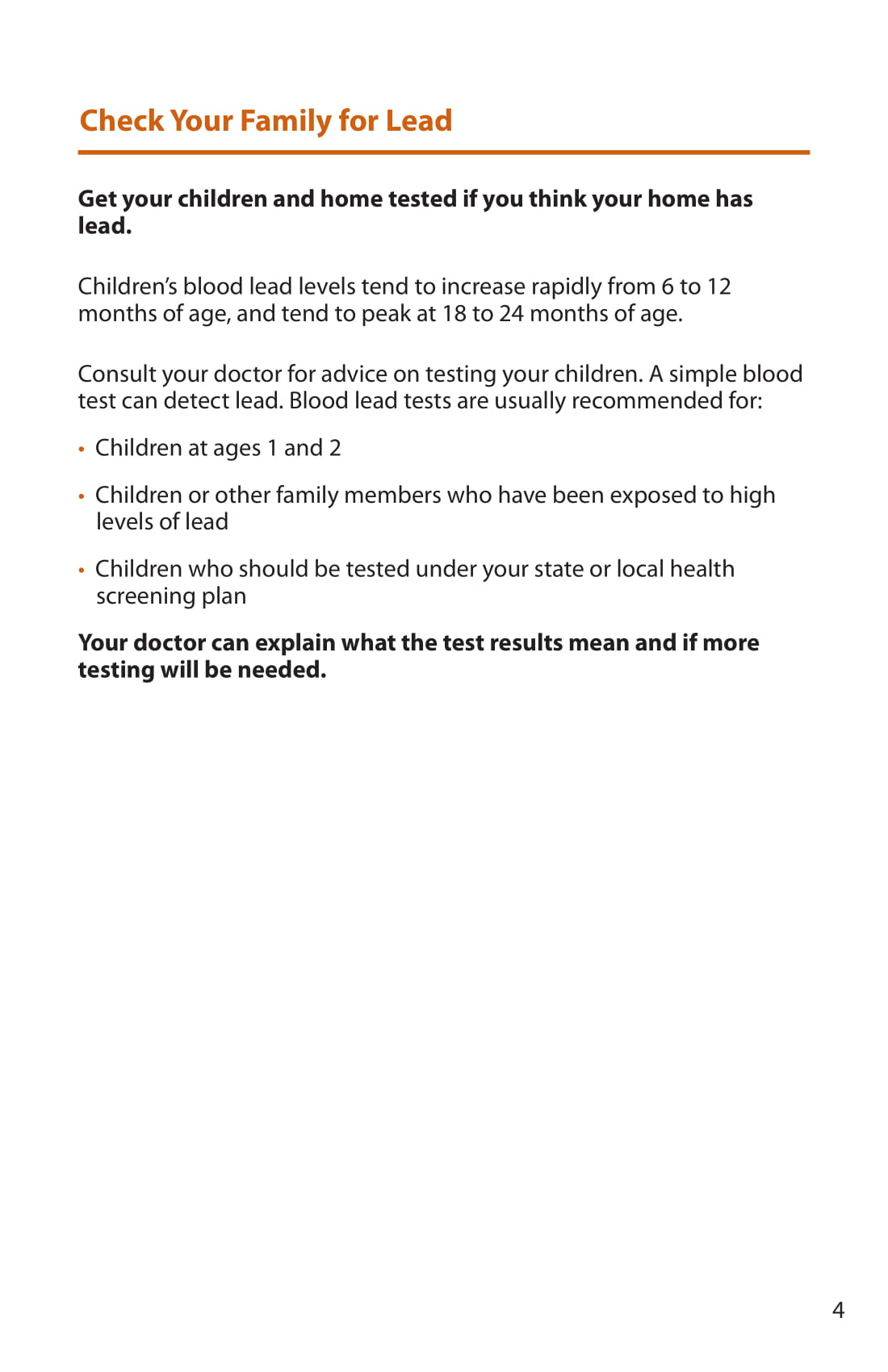
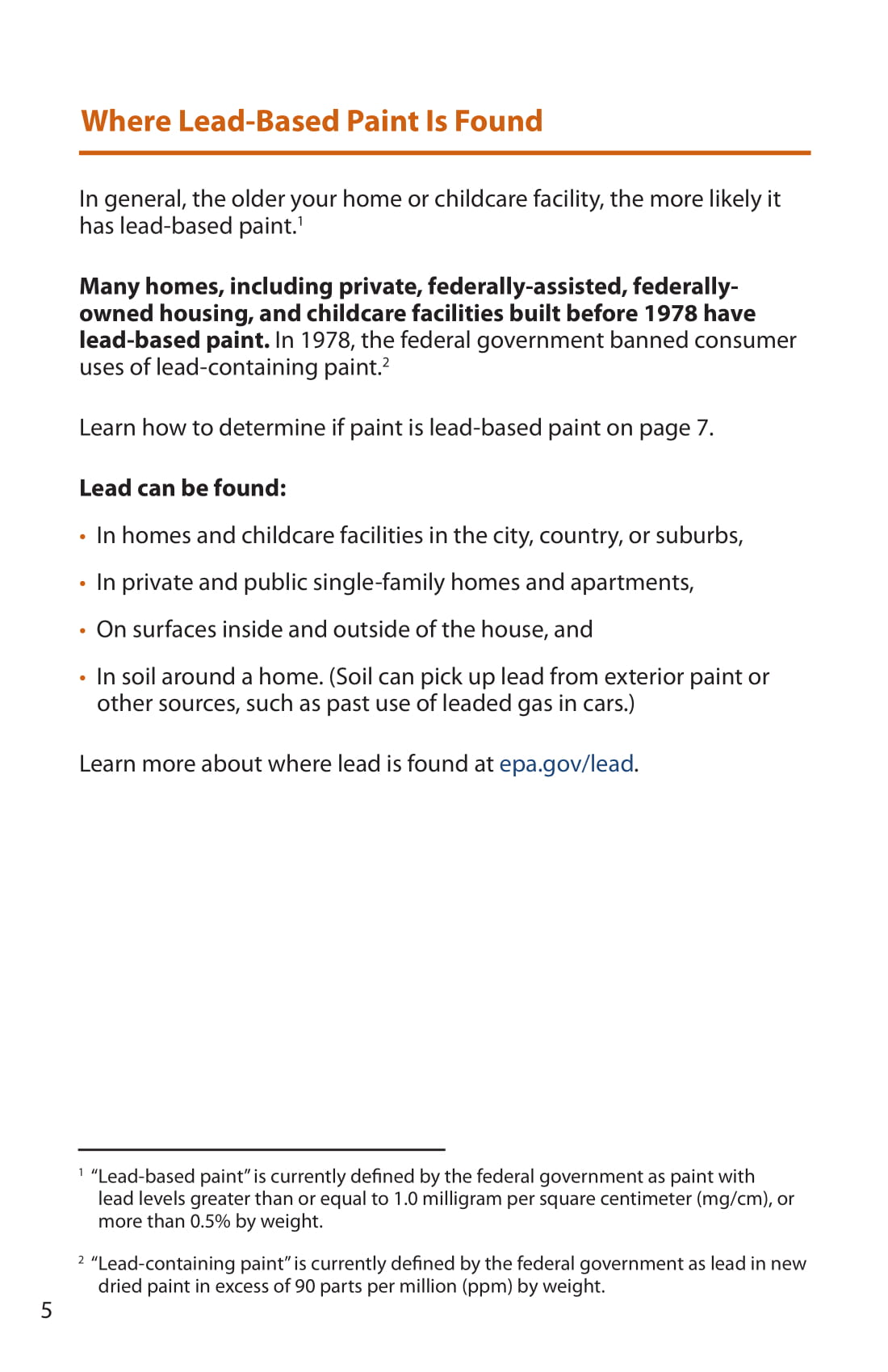
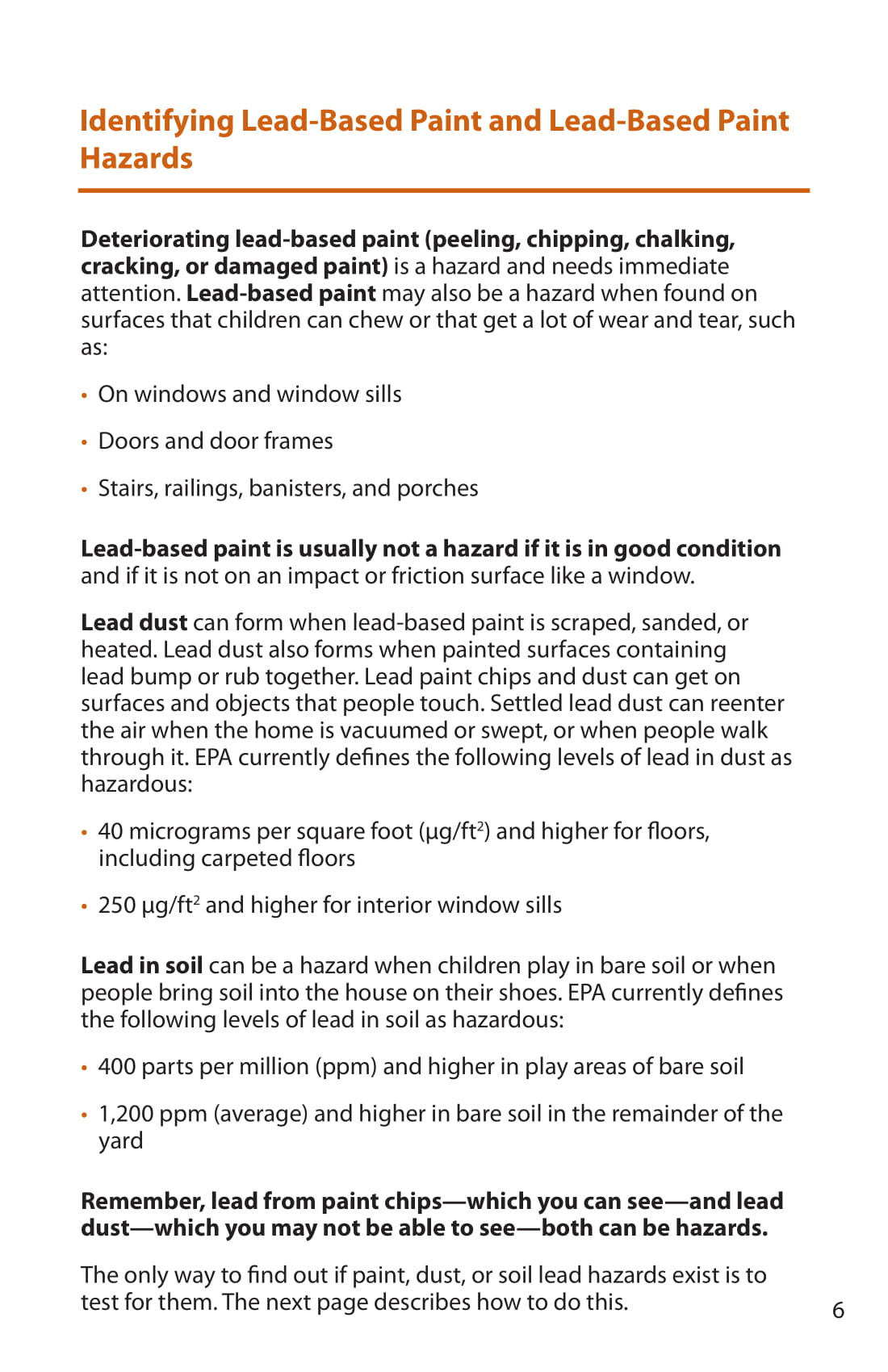
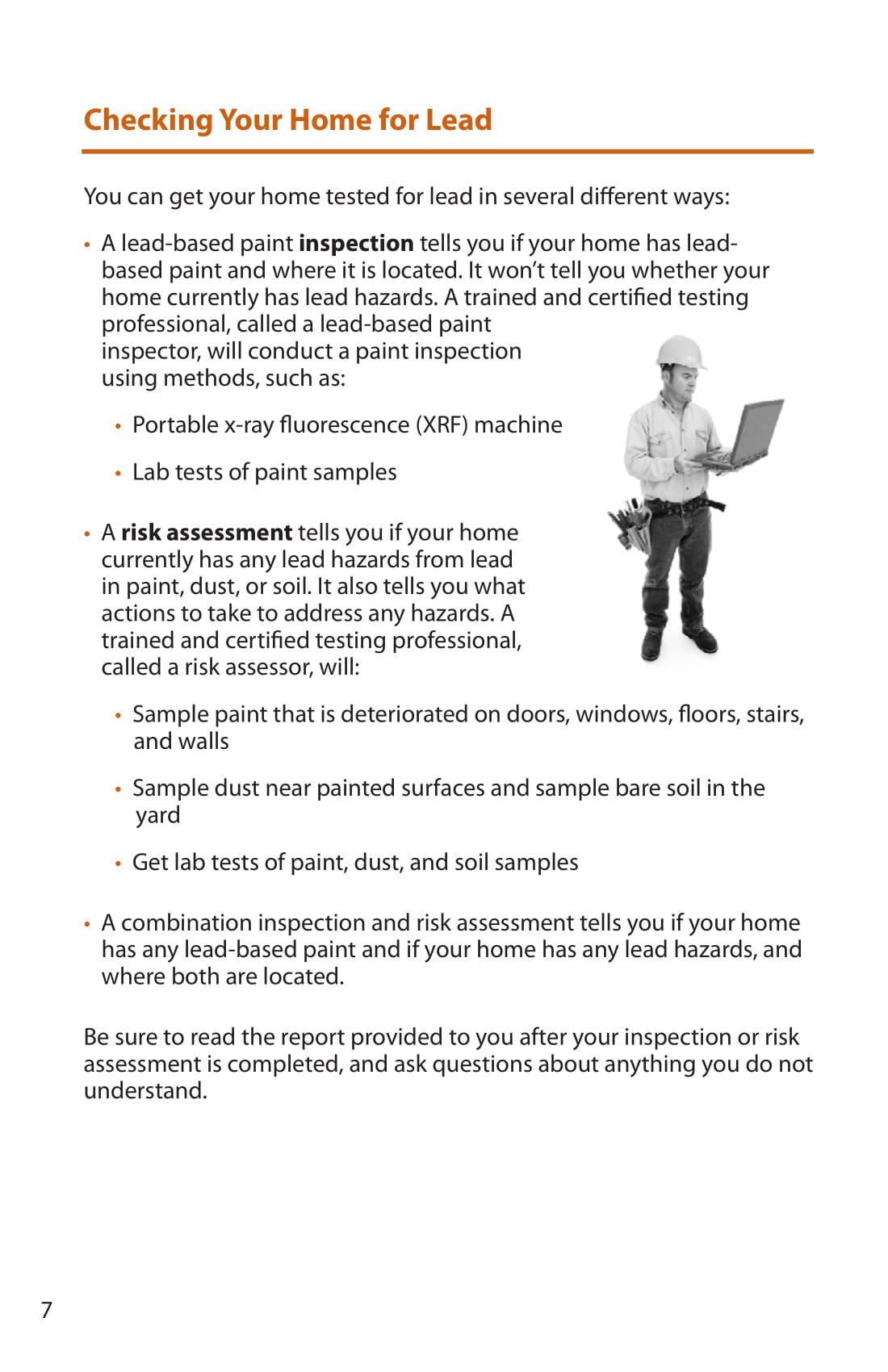
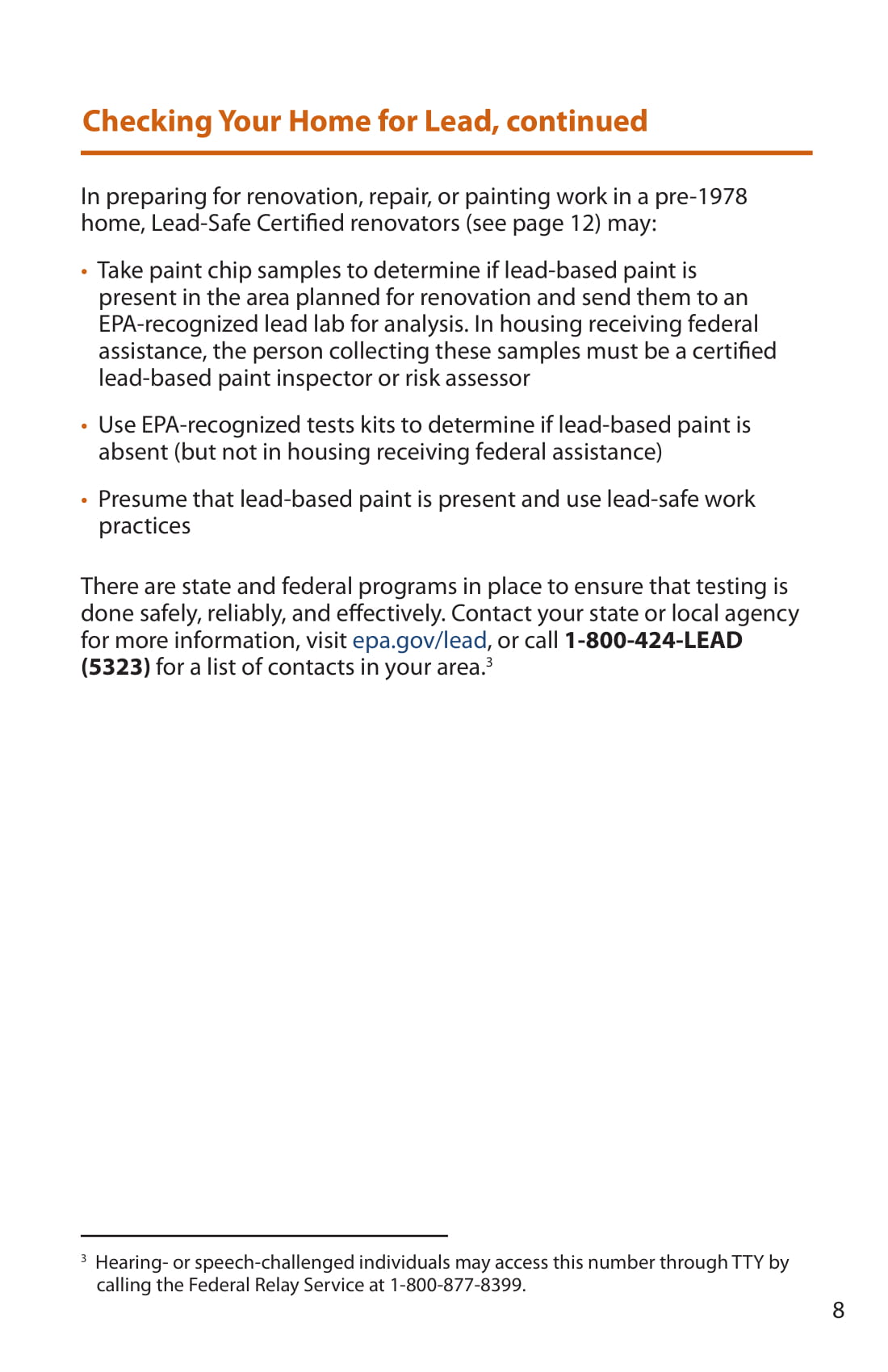
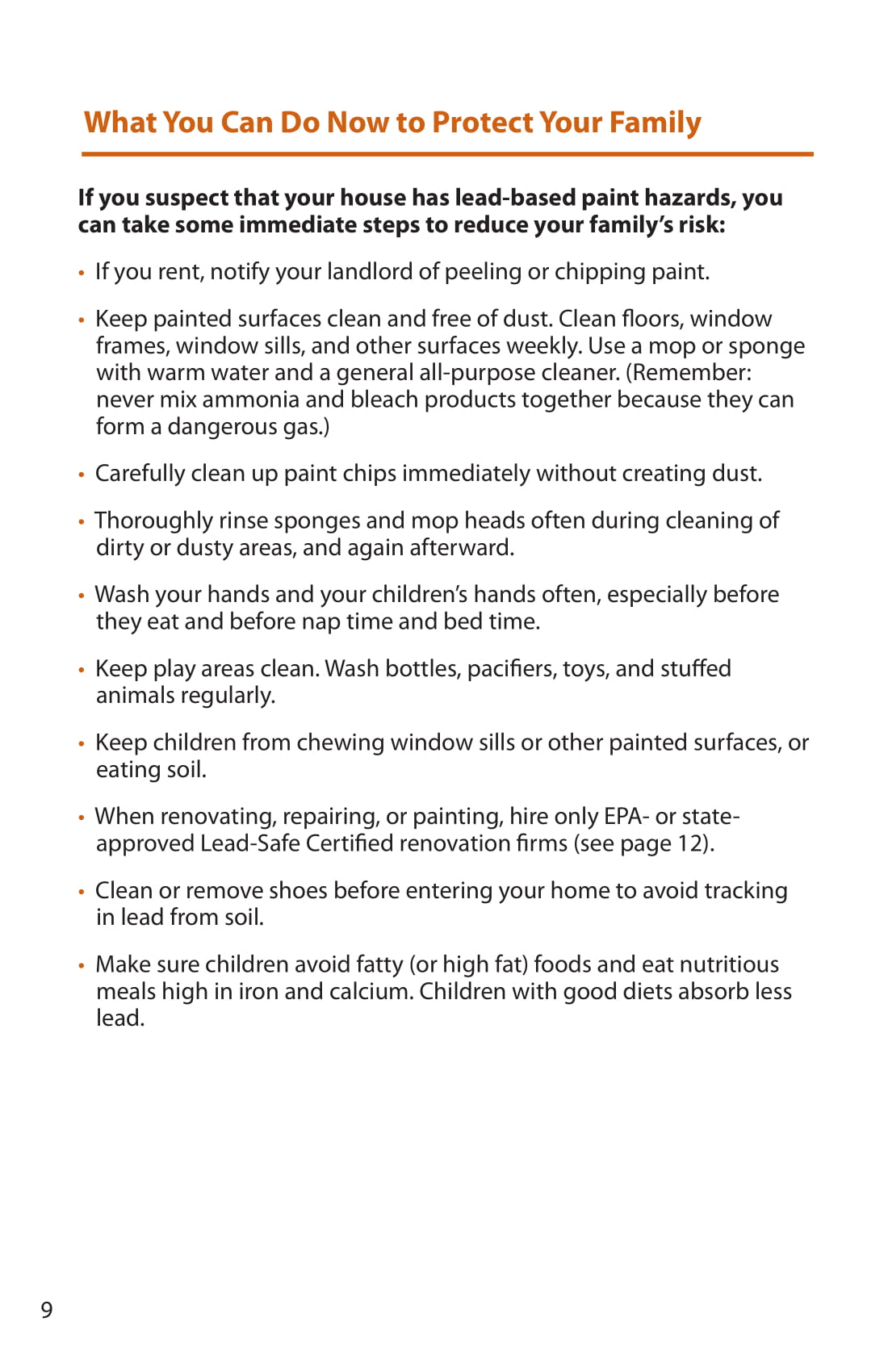
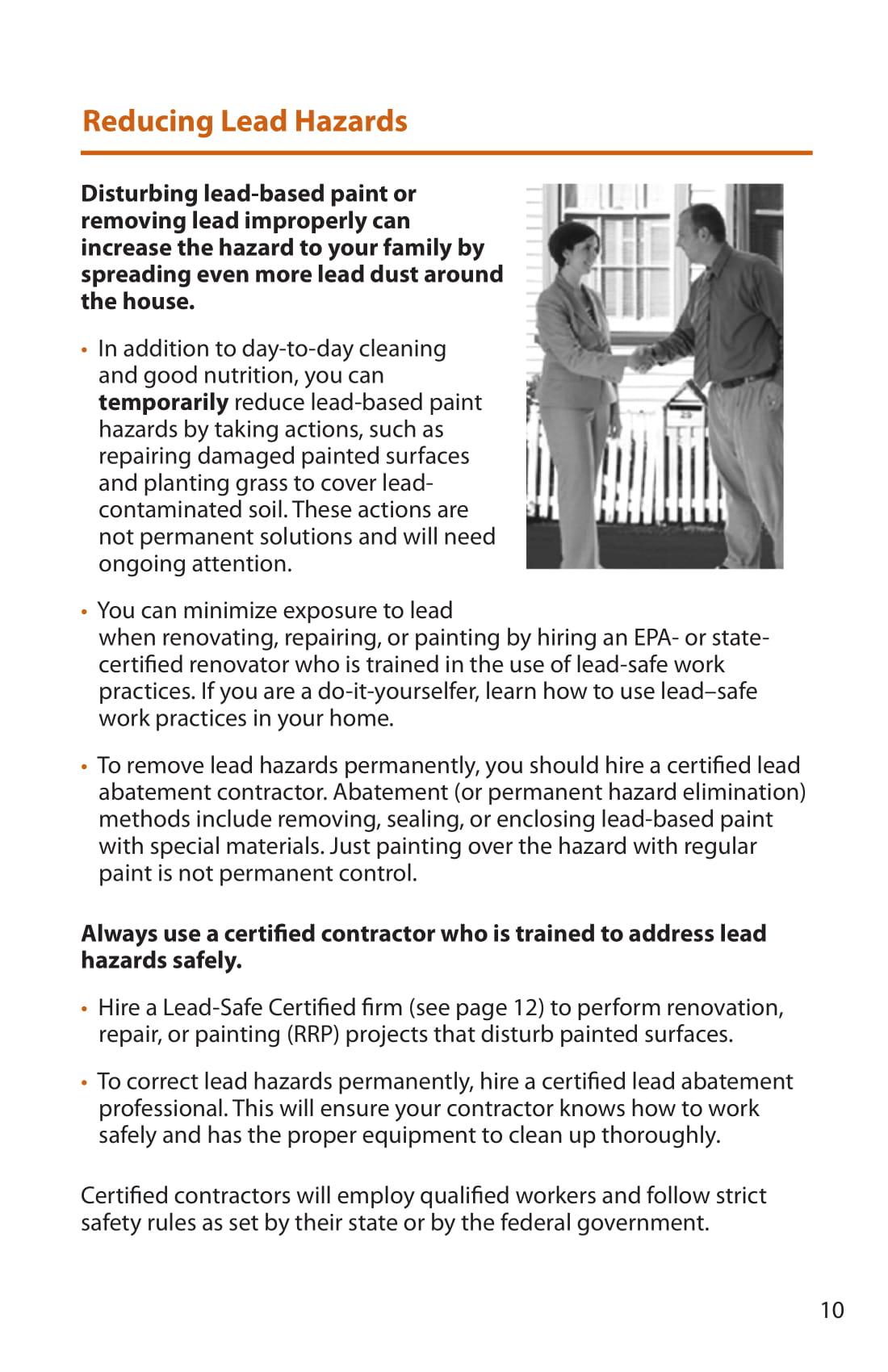
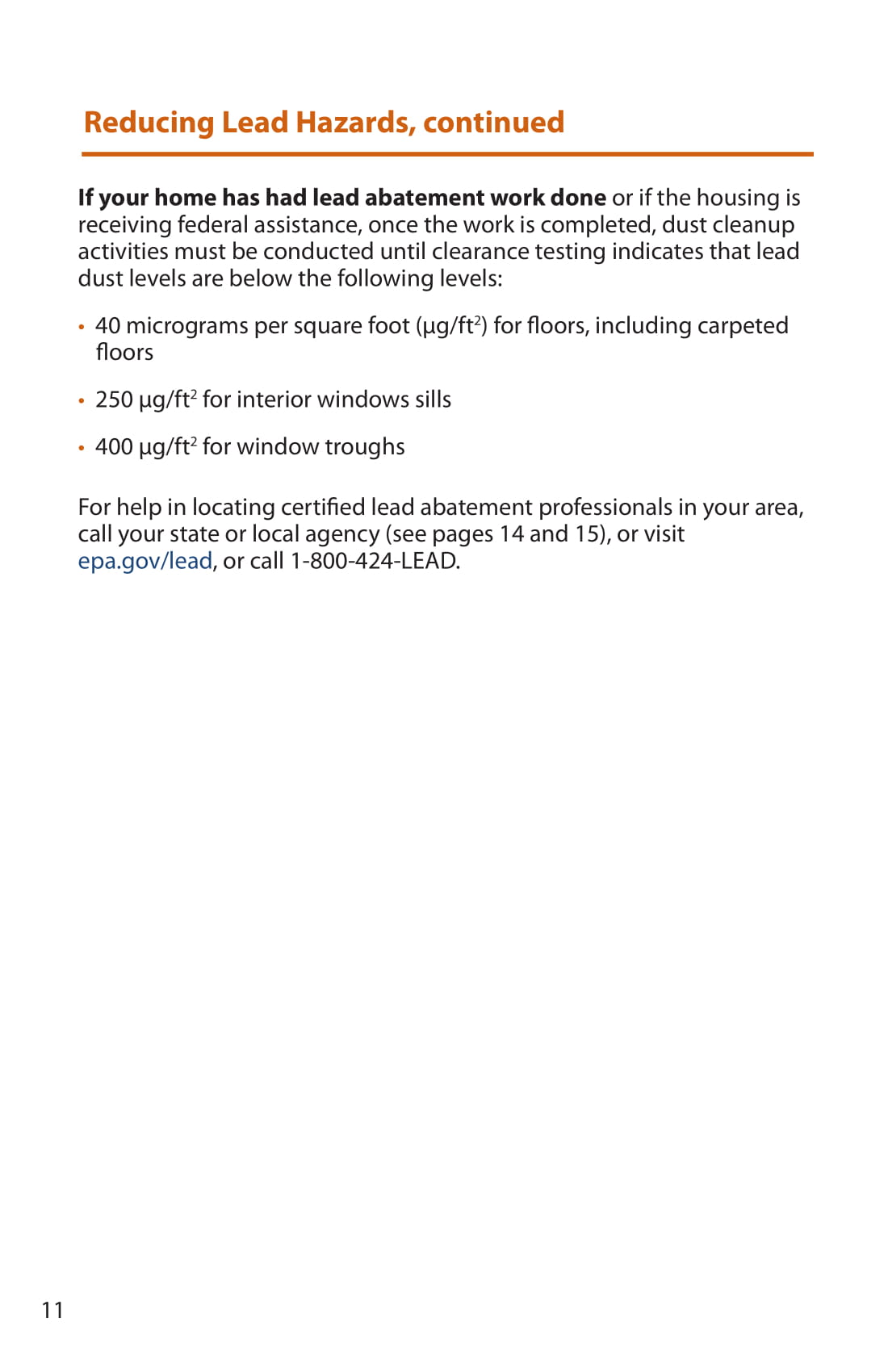
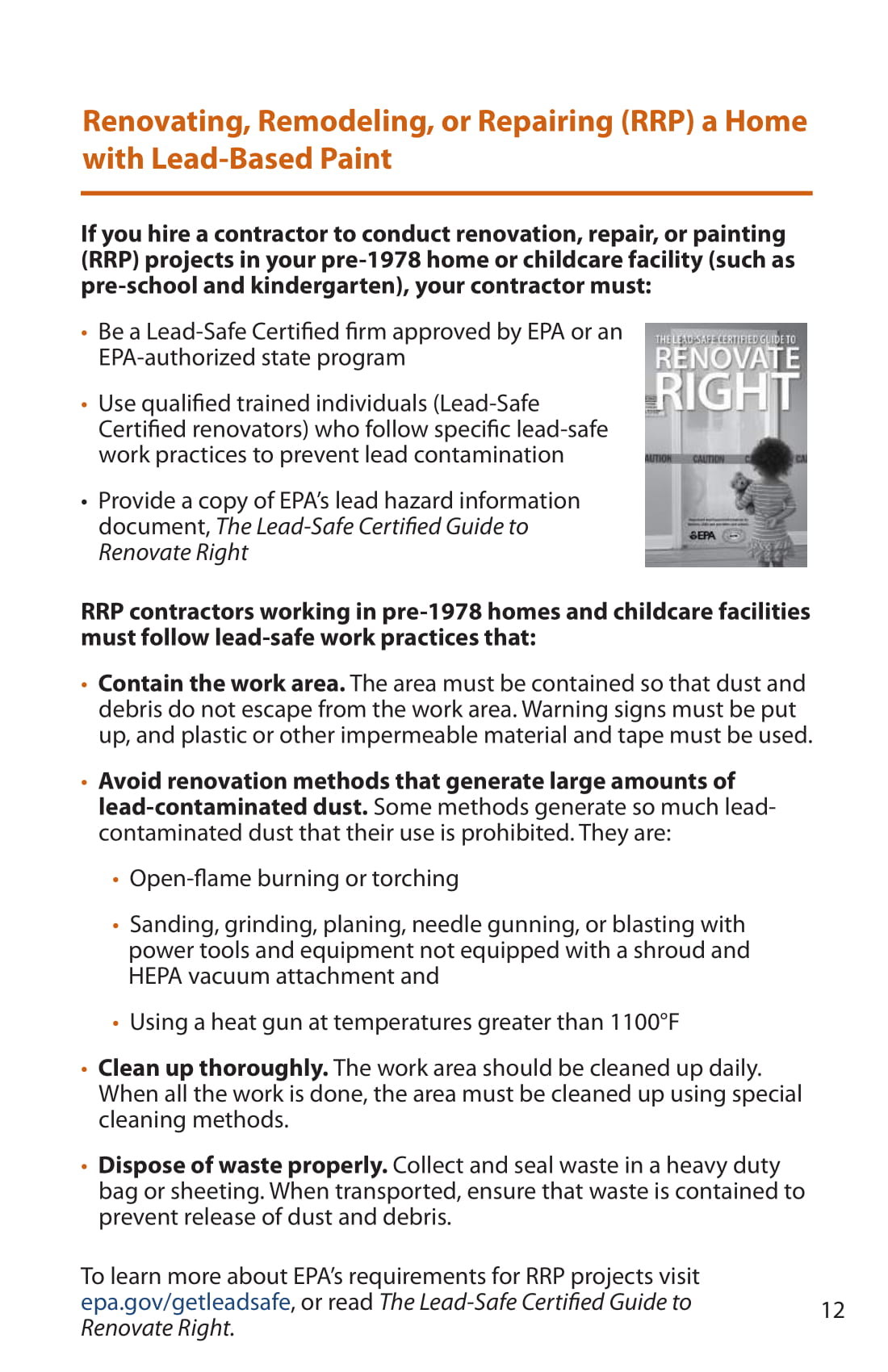
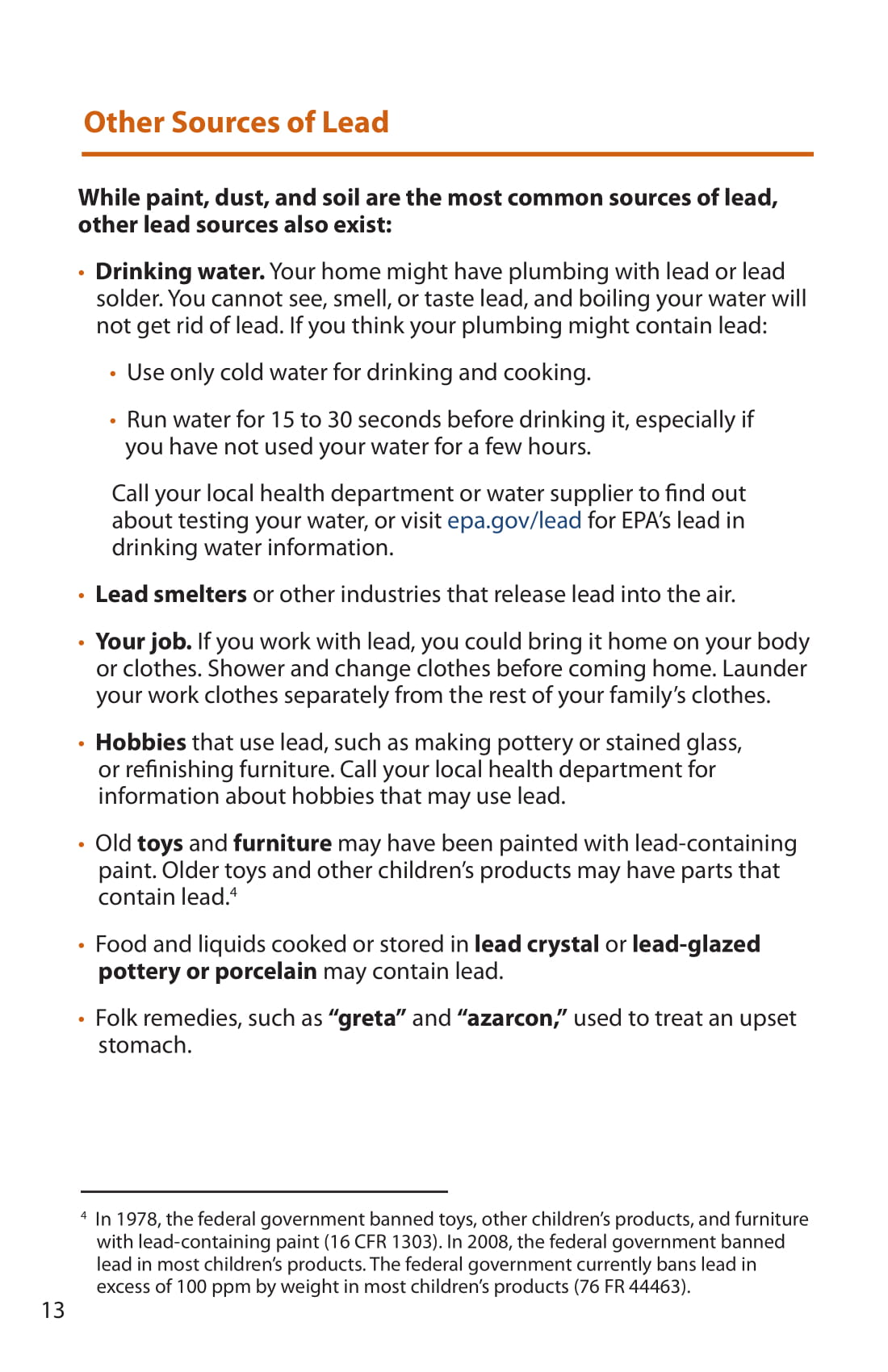
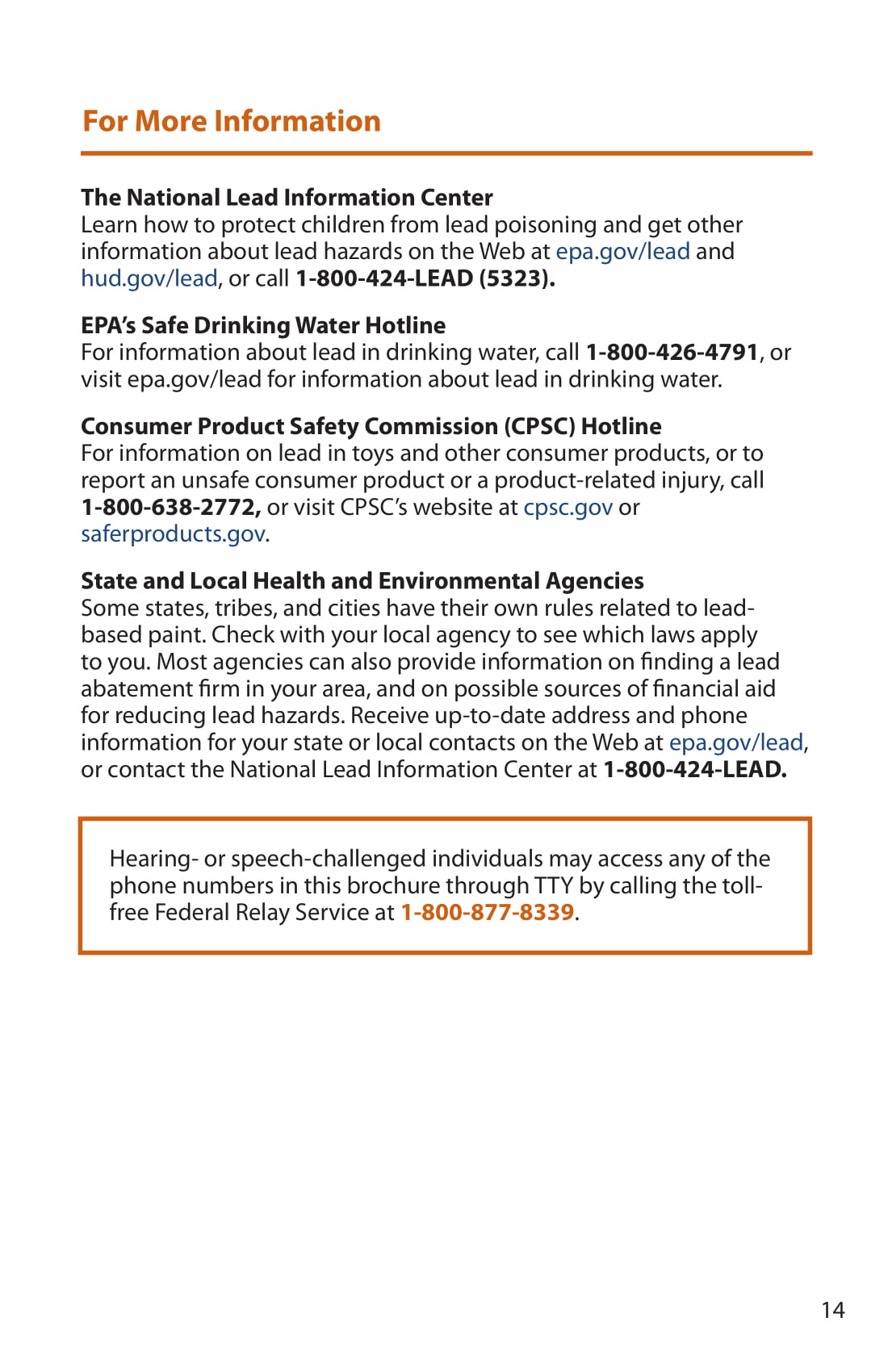
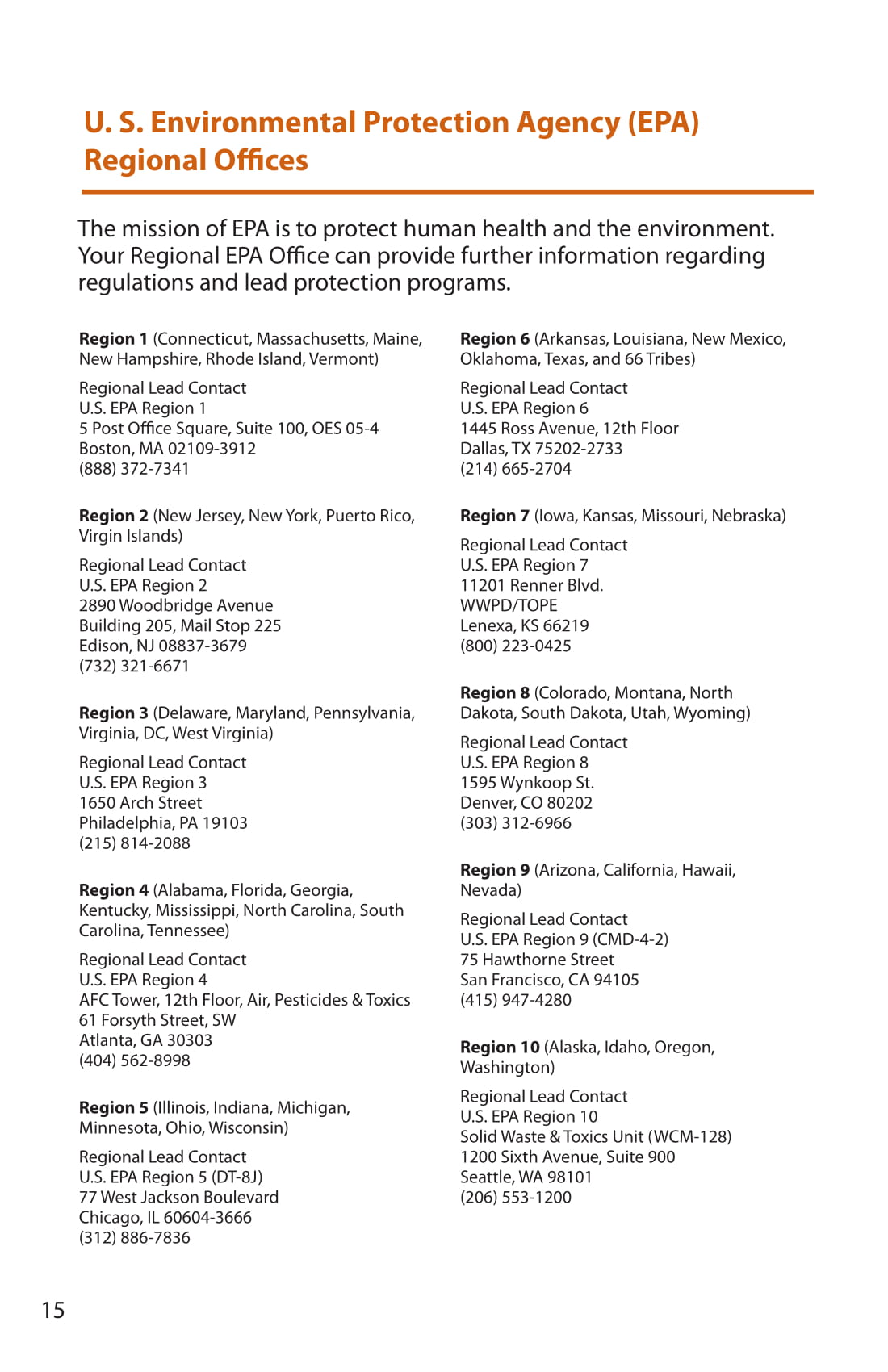
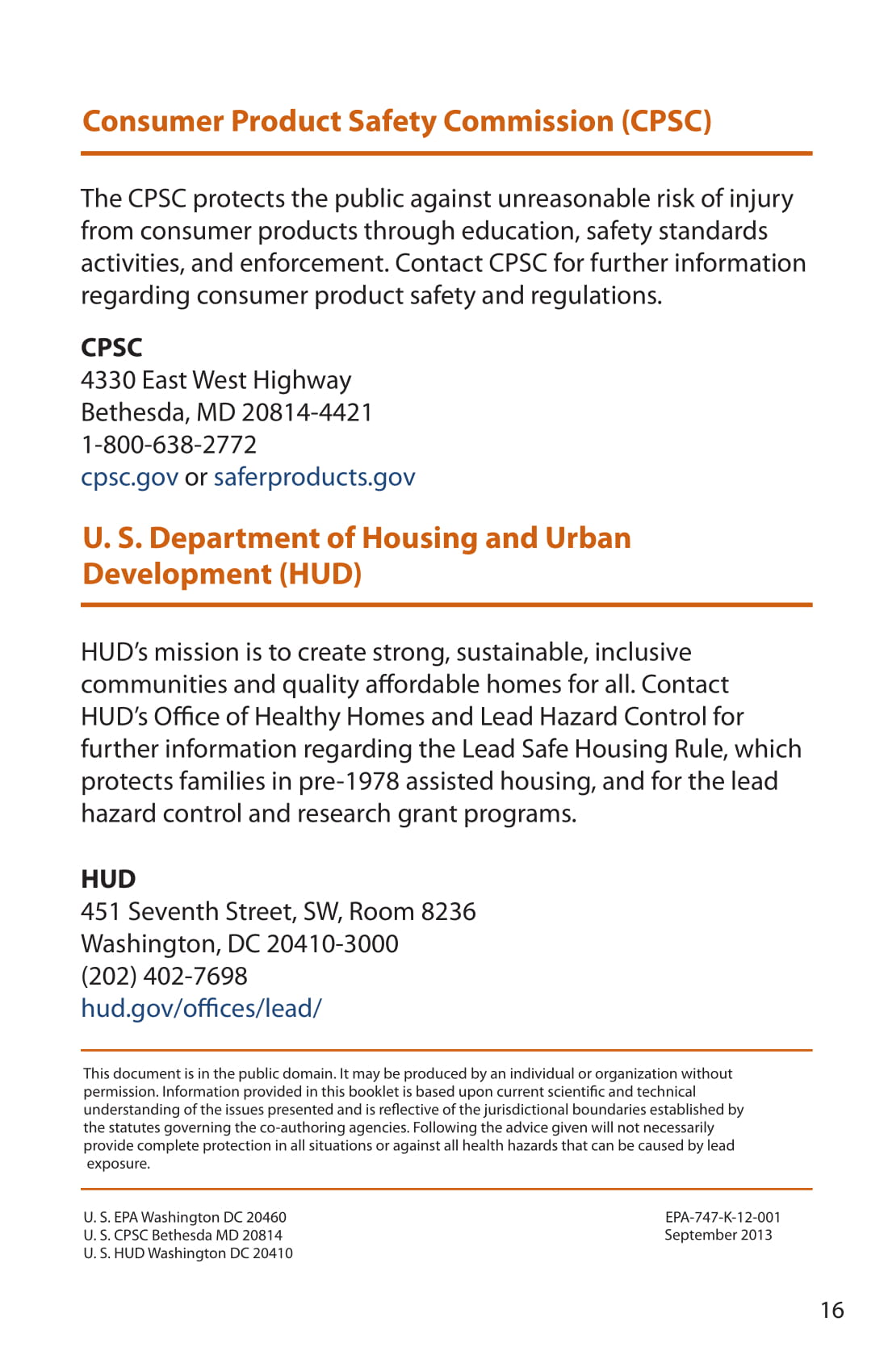
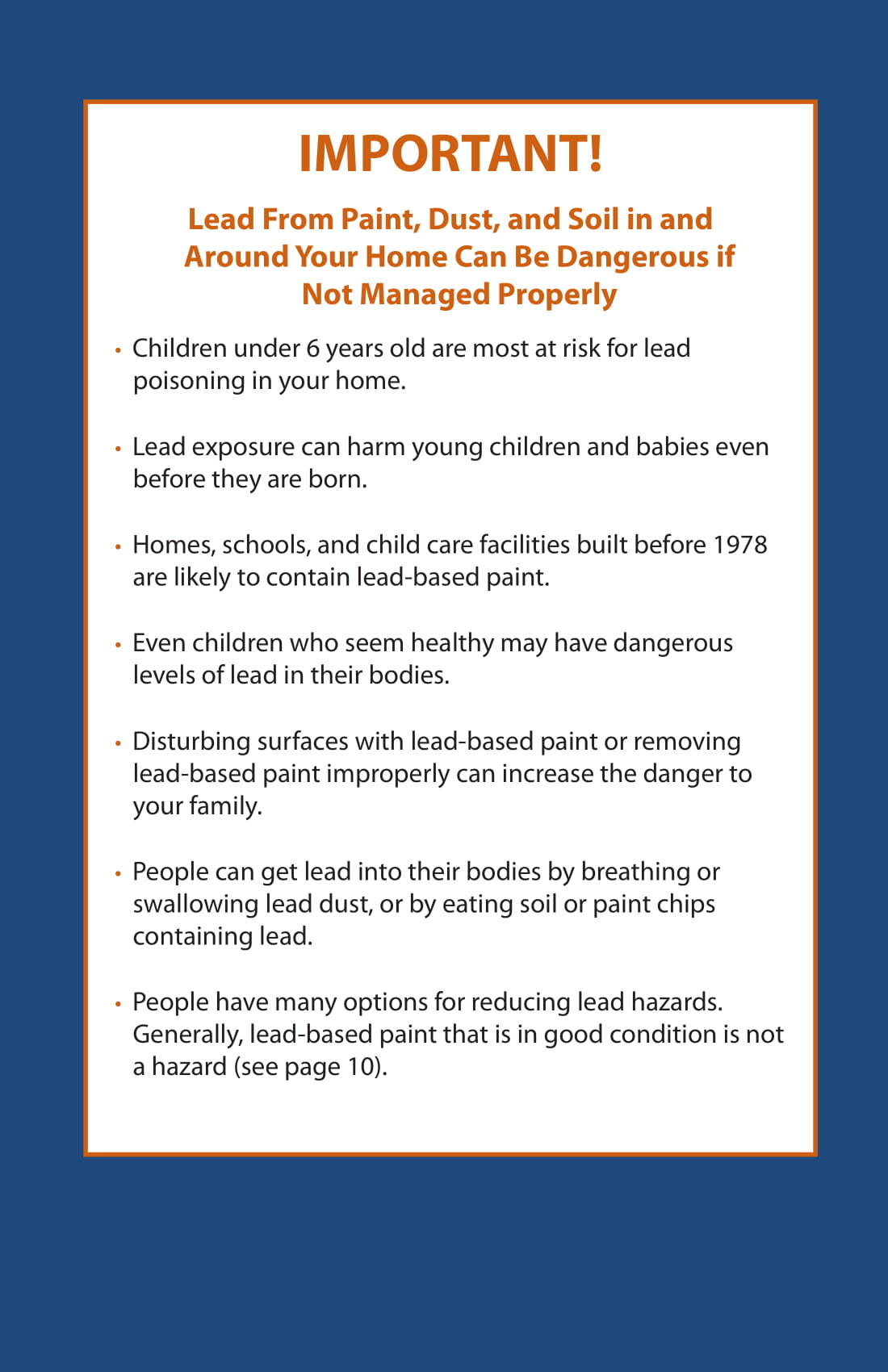
33.1b Disclosure of Information on Lead-Based Paint and/or Lead-Based Paint Hazards
Please spend a few minutes reviewing the document below.

33.2 Asbestos
Transcript
What is Asbestos?
Asbestos is a mineral fiber that has fire-resistant and insulation properties, and because of this, it was popular, for a period of time, in home construction. It was an inexpensive material used on pipes and in attics but also incorporated into many other products such as floor coverings, siding, plaster, roofing, caulking, and glue.
Brief History of Asbestos
A naturally occurring mineral fiber, found in dirt and rocks, asbestos has been around for a long time, dating back to the Stone Age. Archeologists have found embalmed Egyptian pharaohs wrapped in a cloth made from asbestos. Clay pots in Finland were found to have asbestos fibers embedded in them. However, even then historians note that the Romans and Greeks were aware that those who worked with this material seemed to have lung problems and other illnesses.
In the Middle Ages, asbestos was used in table coverings to minimize the fires that were ignited by the celebrations. For catapults, flaming bags of burning material were wrapped in asbestos before they were launched at the enemy. There’s an asbestos purse in London's Natural History Museum, and as the use spread to paper, asbestos became part of Italian bank notes in the 1800s.
During the Industrial Revolution, the mining of asbestos took off as the demand increased. It was used in building automobiles, as well as for the military and in construction. When mining became mechanized, around the early 1900s, production expanded, prices dropped, and it seemed like asbestos was showing up everywhere. It’s even in some of the roads that were built between the 1930s to the 1950s.
The applications seemed limitless since the material proved to be resistant to not only fire, but water, chemicals, and electricity. Add that it was pliable and cost-effective, and the result is a product that could insulate and strengthen, as well as function in many ways.
Around the same time, asbestos was becoming widespread, reports were coming in about detrimental health effects from working around asbestos and its related products. Lung problems were documented and as early as 1906 the first death directly attributed to asbestos happened to a 33-year-old in London, who died from pulmonary failure.
Regardless, asbestos use continued to grow. Even today asbestos is not a banned material in the United States, but in the 1970s, the federal government did enact legislation to limit the use and application of asbestos.
Where Asbestos is Commonly Found
Asbestos can be found in homes in many places. Because it was cheap and readily available, it was incorporated into a variety of products. You can’t identify what products contain asbestos by looking at them, it requires knowledge, and if you think asbestos could be a problem, it’s a good idea to bring in an expert.
Some of the products containing asbestos and found in homes include:
- Roofing shingles
- Siding
- Floor tiles
- Wall and attic insulation
- Wall and ceiling patching materials
- Water and other pipes
- Glue and cement compounds
You really need a professional to locate the occurrences of asbestos, because even just testing for the material can disturb it and make it toxic.
Why is Asbestos Dangerous?
When microscopic asbestos fibers get into the body, often through the lungs, they cannot be expelled by normal functions. The body is not equipped to rid itself of this toxin. In fact, the tiny fibers can get past the lung’s normal filtration system to affect the rest of the body. If the fibers are swallowed, they can cause trouble in the stomach. Some researchers even believe that asbestos can infiltrate the lymphatic system.
Whatever way it happens to get into the body, once it’s there it cannot be removed. Continued exposure to asbestos and the sharp minuscule particles can burrow into tissues and even change them, resulting in disease. These diseases can take a long time to develop, but they can be deadly. The three most common are:
- Asbestosis – A serious, chronic, non-cancer lung disease caused by inhaling asbestos fibers. The symptoms can be mild to severe and generally don’t appear for many years after exposure, with some cases showing up 40 years later.
- Mesothelioma – an aggressive rare form of cancer that affects the lining of the lungs (pleural mesothelioma) or the stomach (peritoneal mesothelioma). Diagnosis can be complicated, and it’s often diagnosed in the later stages. Mesothelioma usually has a poor prognosis, with no known cure.
- Lung cancer – Lung cancer and mesothelioma are both caused by asbestos, and they cause similar symptoms. The difference is where they originate. Lung cancer begins in the lungs, while mesothelioma is in the lining of the lungs. The treatment is different in each case, as is the prognosis.
Since asbestos is still being used in some materials today, despite the fact that it’s so toxic, you might be wondering why. The answer lies in the condition of the asbestos, which is either friable or non-friable. Friable asbestos is that which can be crumbled or made into a power. Non-friable asbestos is in a whole state and is not usually dangerous until it’s cut, sawed, or sanded, at which point it becomes the powder that can be a health hazard.
It’s important to note that the buyer, agent, homeowner, or any untrained person should never try to remove or sample suspected asbestos. The mere disturbance of the material can release the dangerous elements.
The nature of home construction and remodeling is that it’s very likely any asbestos or asbestos-related materials will be cut, sawed, or sanded, creating an unsafe situation. Even normal living wear-and-tear can disrupt the condition of the asbestos, so it’s important to monitor it even if appears to be fine at the moment.
Mitigating asbestos might mean removing the material, but sometimes the threat can be contained with less drastic measures. Again, it depends on the circumstances.
If the asbestos needs to be removed it should be done by a contractor who is certified to do abatement work. Special precautions need to be taken when the inevitable fibers become airborne. The use of disposable protective clothing, HEPA filters, and other containment precautions are recommended.
How Does Asbestos Affect the Buying and Selling of a Home?
Let’s say after months of searching the buyers have found a delightful older home at a price they can afford and in the location they want. It’s exactly what they’ve been looking for, and they are excited beyond belief. They open escrow and order a home inspection.
The inspector identifies two areas of concern and recommends they have an asbestos abatement specialist come in, test the materials, and suggest how the issues might be resolved.
One of the rooms had been remodeled and now has a popcorn ceiling, sometimes called a cottage-cheese or stucco ceiling. Since not all popcorn ceilings are made of asbestos, the buyers agree to get expert’s opinion.
The expert, a professional in abatement, knows that asbestos popcorn ceilings were banned by the Environmental Protection Agency (EPA) in 1977, but didn’t have information on when the room had been remodeled, so he carefully took a sample, making sure not to release the harmful fibers.
In another area of the house, the professional found some pipe insulation that was made from asbestos, and he didn’t feel it was safe to leave it as-is.
The news is upsetting to the buyers and their first questions are about their options. As with most issues in a real estate purchase, they have choices. Here there are basically three options. They can:
- Continue with the sales process, accepting the report results.
- Stop the purchasing process and cancel the contract. This choice can have financial repercussions depending on the terms of the contract.
- Negotiate with the seller. Usually this step involves getting estimates for remediation, then working with the seller to come to an agreement that suits both parties.
In this scenario, the buyers loved the home and they had already spent a lot of time looking at properties that didn’t fit their needs. The professional suggested removing the ceiling popcorn after it tested positive for asbestos, and simply containing the questionable pipe insulation so the asbestos would be sealed in and unable to contaminate anything.
Since the problems and solutions were reasonable, the sellers agreed to pay the cost of this work, and the sale was back on track and headed for closing.
The key is for all parties to be informed, aware of the methods to correct the situation, and willing to work together to find a solution.
In homes built before 1980, asbestos was commonly used because the dangers were not known. Since that time, with the dangers revealed, it’s important to inform property owners and buyers about the use or suspected use of the product. But it doesn’t have to mean the deal is automatically off, because there have been a variety of ways invented to remedy the situation, out of necessity, since this problem still comes up frequently in older homes.
If the buyer and the seller want to complete the sale, it’s vital for you, as the agent, to explore ways to make that happen. That will ensure the safety and satisfaction of all involved. Your ability to help the parties navigate circumstances like these will result in a wonderful reputation as a professional and solution-oriented agent.
Key Terms
Asbestos
A naturally occurring mineral fiber sometimes found in older homes. It is hazardous to health when a possibility exists of exposure to inhalable fibers. Homeowners should be alert for friable asbestos and always seek professional advice in dealing with it.
Asbestosis
A chronic lung disease caused by inhaling asbestos fibers.
Friable
Easily crumbled or reduced to power. Asbestos is an example of a friable substance.
33.3 Radon
Transcript
What is radon?
Radon is a naturally occurring radioactive gas that is colorless and odorless. It’s commonly found in soil and igneous rocks and is a result of the decaying uranium and thorium in the ground. It can also be found in well water.
Based on human and animal studies, radon has been determined to be harmful to people and animals and consequently, radon has become an important public health issue. It is estimated that 15,000-20,000 deaths a year are related to radon, primarily from lung cancer.
How does it get into homes?
The most common way radon gets into houses is through soil. If the house wasn’t there, the radon would naturally dissipate into the air, but with a house on the land the radon gets trapped in the house. It can also enter through openings in the home, cracks and tiny holes in concrete, gaps in the foundation, and leaks in the area around pipes and wires. Once it enters from the outside, it can collect in the lower places like a basement or crawl space, because radon is heavier than air.
The house can work as a vacuum because as warmer air in the house rises, it makes the air pressure drop in the lower areas. Even though it is slight, it has enough pull to move the radon upward where it can settle in the basement, crawl space or cellar. Another way the air pressure in the house can drop is due to the Bernoulli effect, which is when the wind blows over the roof in such a way that it causes a drop in the air pressure inside the house.
Radon is water soluble, so it can move through the water that travels underground. This results in radon showing up where it’s not expected and explains why homes that sit side-by-side can vary dramatically in radon levels.
If a home uses well water, it’s possible for the radon to be in the water and it will get into the house through the shower, sinks, laundry, and dishwashing.
Today’s houses are built to be airtight, and you can see how once the radon is present in the home, it is often trapped there and levels can increase when there’s no escape for the gases.
What are the health effects of radon?
Radon is considered a class-one carcinogen, which means it was found to be a definite cancer-causing substance. What makes radon particularly dangerous are the alpha radiation particles. It’s the same type of radiation that materials such as plutonium produce. When it is isolated outside the body it’s not as harmful as some other types of radiation, such as beta and gamma rays, but it becomes damaging when it’s ingested or inhaled.
When the radon gas is breathed in, it affects the lung tissue and the greater the concentration of radon, the more difficult it is for the lungs to expel it. The particles can damage DNA, and if enough damage is caused, the cells will die. This is particularly dangerous for children.
A report by the National Academy of Science's Biological Effects of Ionizing Radiation (BEIR VI) finds that radon is the nation’s second-leading cause of lung cancer, right after smoking. And it’s present in every state. Smokers who are exposed to radon gas have a significantly higher rate of lung cancer. The Environmental Protection Agency (EPA) reports around 15,000 cases of lung cancer a year attributed to radon exposure. Among people with cancer, lung cancer has one of the lowest survival rates.
While people can be exposed to radon with no symptoms, some people show signs of respiratory issues which could indicate problems related to radon poisoning. Unfortunately, there are no common tests to determine if someone has been exposed to toxic levels, and often the first sign is when the person develops lung cancer. Awareness of the indicators of lung cancer includes hoarseness, a persistent cough, frequent respiratory infections, or trouble with breathing.
Detecting and testing
According to the EPA anyone buying a home should have a radon test, even for those homes that have been built to be radon-resistant. There is no visible way to tell if a house has radon or not and it doesn’t matter if the house is old or new, one story or two. Radon can occur in any building. Basically, any construction that is in contact with the ground could have radon.
In addition to the EPA and U.S. Surgeon General recommending that all houses be tested, some lenders require it. Lenders use a form, the Home Inspection Form (HUD-92564-CN), that they give to homebuyers for that purpose.
Sellers have to disclose anything they know about radon, even if it has been treated. If it was treated the seller should provide the results and information about any remediation or radon reduction system that was installed. If radon tests were run previously the buyer should be told where in the house the test took place, who conducted the test, and if any remodeling or renovations had been done subsequent to the testing.
Since radon levels can change, the EPA recommends a new test when a buyer is planning to purchase. It should be part of the home inspection contingency and should spell out who will be paying for the test, and who pays for remediation, if it becomes necessary. The buyer can specify who they want to do the testing. Before hiring, the buyer should check references and get estimates.
Fixing the problem
The amount of radon present is measured in picocuries per liter of air and or water. The average outdoor number is 0.4, while the indoor average is 1.3. The EPA has determined action should be taken when the level of radon is 4 picocuries of radon per liter of air or higher (pCi/l) but suggests considering it when the levels are between 2-4 pCi/l. However, the EPA does not consider any level of radon completely safe.
The good news is that any house with a high level of radon can be fixed, and it’s one of the easiest environmental risks to correct. Depending on the levels present, it can be as simple as sealing cracks and concrete or putting a plastic barrier over the ground to block the radon.
If more serious steps are needed, a system can be installed that will suction the radon from the ground under the house and funnel it to the outside air, increasing the ventilation using pipes and fans.
Home inspectors can perform a radon mitigation system inspection, which consists of seven inspection elements and can be done in less than 15 minutes. It’s often included as part of the home inspection, but not always. A radon mitigation specialist can determine which of the many options available will be best to remedy the specific situation.
Best practices
As a real estate agent, it’s a good idea to be familiar with the resources about radon available in your state, as this can vary. As always, encouraging the buyer to get all tests available so they will know everything they can about the home they are purchasing is wise advice.
The home inspection contingency should include radon testing. It should also detail what steps to be taken if radon is found and who will bear the costs. The goal should be to lower the home’s radon level to an amount below 4 pCi/L.
If your buyer or seller wants to know more, the EPA has two guides available in PDF form, for no charge, to explain more. The Home Buyer's and Seller's Guide to Radon addresses radon and the risks for lung cancer, and offers information about testing and correcting a radon problem. The Consumer's Guide to Radon Reduction: How to Fix Your Home describes home radon reduction methods and radon reduction systems.
The important thing to remember is that, while radon can be toxic, it can almost always be mitigated to an acceptable level. There are professionals available and every state has a radon office where a list of qualified specialists can be found. High levels of radon require special skills and knowledge, so it’s not recommended as a do-it-yourself job for the homeowner.
Historical side note
It’s interesting to realize that radon has not always been considered a dangerous substance, and for some people, it’s considered a treatment, even today. In Europe, there are tunnels and mines that offer steam treatments and baths to expose users to radon. In the United States, there are four mines open to the public for inhalation of radon. They are all located in former gold and uranium mines near the towns of Basin and Boulder in southwest Montana.
People come from all over to sit in the mines and breath in the radon, estimated to be 175 times the approved EPA rate for homes. These visitors believe the radon has beneficial effects for their arthritis, asthma, diabetes, chronic pain, and other disease symptoms. The proponents believe that low doses of the radiation optimize the hormones used for control of pain and stress management.
Key Terms
Radon
A colorless, odorless gas that is emitted from soils, rocks and water as a result of radioactive decay in certain areas of the country.
33.4 Mold
Transcript
Mold is a naturally occurring element. Outside, mold helps to decompose dead materials like leaves and trees and leaf mold is often used in organic gardening. However, mold in the home is another issue altogether.
How does it get into homes?
There is mold everywhere, in dust and floating in the air. Molds have microscopic-sized spores that are present in the air, and when they blow into a house, they can become a problem. If they land on a wet surface or are in a moist environment, they multiply.
Mold can affect indoor air quality and can irritate the skin, nose, eyes, and lungs. Mold exposure has been linked to respiratory issues like asthma or allergic complaints. Sensitive people who touch mold can have a reaction. Mold eventually ruins the materials on which they grow, such as furniture and wood products. The longer it grows, the worse the damage.
Homes that are built to be air-tight can result in trapped moisture that can’t escape, which could result in mold on walls and underneath floors. Bathrooms are a common source of mold since they are frequently damp or wet in areas. Good ventilation, such as a fan or open window, will help dry the area, and cleaning frequently will cut down on mold growth.
What to do about it?
Prevention is the first line of defense to control mold, and prevention means controlling moisture, because mold cannot grow without water or moisture. Mold can be found anywhere, as long as there is moisture. There are different types of mold, and they can grow on any type of material, from wood and carpet to food and paper.
If mold is found, it must be removed and the source of moisture needs to located and eliminated. The area should be dried, repaired or replaced as necessary and checked to be sure there will be no further moisture problems. Maintain indoor humidity at between 30-60% or less using proper ventilation, exhaust fans, air conditioners, and dehumidifiers.
According to the Environmental Protection Agency (EPA), if the area affected by mold is 10 square feet or less, it can be fixed by following the Mold Cleanup Techniques for mold cleanup in your home. The techniques include:
- Repairing leaks and drying the area.
- Scrubbing mold off hard surfaces with water and detergent, then dry thoroughly.
- Absorbent surfaces that have mold should be replaced.
- Do not paint over mold, instead, clean it up and let the area dry completely first.
- If you have valuable items that have mold, you might want to consult a specialist for cleaning techniques.
- If the heating/ventilation/air conditioning system (HVAC) has mold, don’t run the system until you have it checked out by a professional.
- If you are experiencing health issues that could be related to mold, consult your health professional.
If there is a large amount of mold, the EPA guide, Mold Remediation in Schools and Commercial Buildings, is available at epa.gov/mold. It has information useful for homes and apartments. There are no EPA regulations on the acceptable amount of mold and its contaminants at this time.
Key Terms
33.5 Carbon Monoxide
Transcript
Carbon monoxide (CO) is a poisonous gas that is colorless, odorless, and tasteless, which makes it very dangerous. It is a result of natural gas or other material which has carbon in it, like kerosene, propane, or wood. It’s frequently mixed with gases that do have an odor to make it easier to detect. The best known and most common occurrence of CO is from the exhaust of an internal combustion engine. Stoves, grills, fireplaces, gas ranges, or furnaces are possible sources in homes and it's a concern because someone exposed to large amounts of CO can lose consciousness and eventually suffocate.
Health Hazards
When carbon monoxide is inhaled, it displaces the oxygen in the blood. This starves the brain, heart, and organs of oxygen. Exposure can cause headaches, drowsiness, nausea, or dizziness, and symptoms are often described as flu-like. People with heart problems can experience chest pain. Continued exposure can lead to vomiting, confusion, and muscle weakness. Symptoms and their intensity can vary in people, with the vulnerable, such as fetuses, children, the elderly, or those with existing diseases being more affected. High altitude can also intensify the effects. While often fatal, CO poisoning can be survivable if caught in time. However, damage to the heart and brain could be irreversible. If a person sleeping soundly is exposed to high levels of carbon monoxide they can die from poisoning before they have any symptoms.
If CO poisoning is suspected, the victim should be moved to fresh air in a well-ventilated area, and emergency services should be contacted immediately. If the victim is breathing, 100-percent oxygen should be given, if available. If the victim is not breathing, cardiopulmonary resuscitation (CPR) should be administered. Be aware that rescue efforts can be dangerous possibly exposing the rescuer to toxic levels of CO.
How to Avoid CO Poisoning
Carbon monoxide detectors alert the household to CO concentrations much like smoke detectors do for fire and smoke levels and are now mandated by most building codes. Like smoke detectors, the batteries should be changed regularly and the unit tested. Additional precautions include getting the heating system, water heater, gas appliances, and gas fireplace serviced yearly and make sure all gas appliances are properly vented.
When there are power outages or serious weather events like hurricanes, people do what they can to stay warm and cook food, but certain items should never be used inside. Do not use chemical heaters, portable gas camp stoves, or burn charcoal indoors, as fumes can be toxic. Don’t use a gas oven to heat the home. Generators should be used outside and kept a minimum of 20 feet from doors, windows, and vents.
Don’t run a car or truck in a garage attached to the house. Even if the garage door is open, the fumes can still seep inside the house. If the home has a chimney it should be checked yearly and cleaned when necessary so there are no blockages that will back up the CO in the house.
As a real estate agent, it’s important to know the carbon monoxide and smoke detector requirements for your state and town, and inform the seller. If the detectors need to be installed prior to closing, find out who in your area does inspections to ensure they have been installed properly and issued the applicable certificate.
Key Terms
33.6 CFCs
Transcript
Chlorofluorocarbons (CFCs) and hydrochlorofluorocarbons (HCFCs) are chemicals that are made up of carbon, chlorine, fluorine and carbon, chlorine, fluorine, hydrogen and hydrocarbons, respectively.
They are found in aerosol sprays, solvents, and refrigerants. The way CFCs cool down is to absorb heat as a vapor in low pressure and release it as a liquid under high pressure. Freon, made of dichlorodifluoromethane, is a trademark of the DuPont Company, and one of the most recognized forms of CFCs. It was created by a team of three chemists as a solution for a safer way of refrigeration.
Freon is a colorless, odorless, nonflammable and noncorrosive gas, which was a great improvement over what was available at the time and became widely used. The refrigerant was used in air conditioners that were manufactured prior to 2003, some freezers and dehumidifiers, and in aerosol cans. The United States banned CFCs in aerosol cans after researchers determined they were depleting the ozone layer.
When The Montreal Protocol on Substances that Deplete the Ozone Layer (also called the Montreal Protocol - from 1987) was finalized it resulted in countries coming together over their concern about the effects of CFCs and HCFCs on the ozone layer. When the CFCs rise in the air above the earth, they enter the stratospheric ozone layer, which is a layer of gas that protects the planet from the sun’s ultraviolet (UVB) radiation. Due to high use and release of CFCs and HCFCs into the atmosphere, scientists discovered the ozone layer developed a hole. The Montreal Protocol is designed to eliminate the manufacture and use of ozone depleting substances and was signed by 197 countries. The production and importing of HCFCs will be phased out by 2020.
In real estate, the question of CFCs and Freon could come up if there are older appliances around. These appliances, such as freezers, refrigerators, and air conditioners, could still be using CFCs, or if they have been thrown away they could still contain refrigerants.
To determine if an air conditioner is using CFCs, there should be a nameplate on the system, usually found on the outdoor condenser unit, that identifies the coolant it uses, along with the safety certifications and electrical ratings. If it can’t be found, the manufacturer can probably provide the location.
Remediation
If appliances using CFCs and HCFCs need to be disposed of, the refrigerants have to be recovered prior to discarding them, and the methods used have to adhere to Environmental Protection Agency (EPA) regulations. A fine of up to $25,000 per day can be assessed if the refrigerants are not recovered and recycled properly.
Even servicing and maintenance have strict guidelines. The valves and vents must remain closed, and recovery machines capture the refrigerant in a holding tank. After recycling, the product can be reused.
As a real estate agent, you need to be aware of the disclosure laws and the issues that are involved that could be pertinent to the sale of the property. Make sure your sellers disclose all information that they know related to potential CFCs and HCFCs.
Key Terms
Chloro-flouro Carbons (CFCs)
A fluid, containing hydrocarbons, that absorbs heat from a reservoir at low temperatures and rejects heat at higher temperatures. When emitted into the atmosphere, CFCs cause depletion of the stratospheric ozone layer.
Freon
Moderately toxic gases or liquids which have typically been used as refrigerants (in air conditioning units) and as aerosol propellants.
33.7 Electro-Magnetic Fields
Transcript
What are electromagnetic fields?
Electromagnetic fields are an invisible field of energy, also called radiation, that consist of electric and magnetic components. These energy areas are created by electricity, which is the movement of current, or electrons, carried through wires.
Think of water flowing through a pipe. The electrons flow through the wire in a similar way, and the pressure required to keep them moving is called the voltage. The higher the voltage, the stronger the electric field. The way the pressure is measured is by volts per meter, or V/m.
The magnetic field is caused by the current moving through the wires, or through electrical devices. It gets stronger as the current intensifies; however, as it gets farther away from the source it weakens. The way magnetic fields are measured is in microteslas, or (μT, or millionths of a tesla).
Another difference between electric fields and magnetic fields is that devices produce electric fields whether they are on or off, while magnetic fields are only active when the current is moving, which is generally only when the device is turned on. However, things like power lines transmit magnetic fields constantly because the electric current flows continuously.
It’s important to note that electric fields can be blocked or hampered by buildings and other obstructions, but magnetic fields penetrate people, animals, buildings, and other materials.
When people discuss electric fields and magnetic fields, which are a result of electromagnetic radiation, they use the term electromagnetic fields or EMFs. The EMFs fall into one of two categories, high-frequency or low- to mid-frequency.
The high-frequency EMFs can damage DNA or cells, and include such things as gamma rays and x-rays. These dangerous EMFs fall in the ionizing radiation area of the electromagnetic spectrum. The electromagnetic spectrum ranges from one extreme to the other. The spectrum goes from long wavelengths, which are low-frequency exposure, to short wavelengths, which are high-frequency exposure.
Ionizing radiation is so intense it can change molecules and atoms by removing the electron. An example of high levels of ionizing radiation being released would be something like a nuclear power plant accident, which can damage or kill people and animals.
Low- to mid-frequency exposure can come from such things as power lines, appliances, infrared radiation, or visible light, which are wavelengths that can be seen by humans. These EMFs are not proven to cause direct damage to DNA or cells, as they are in the non-ionizing radiation area of the electromagnetic spectrum, but this is controversial.
What are the health concerns of electromagnetic fields?
Cancer is one of the primary areas being studied in relation to electromagnetic fields, and the concern is that the non-ionizing EMFs are found everywhere, like our workplaces, schools, stores, offices, and homes.
While the ionizing radiation is a proven danger, as of yet, there has not been established a connection between non-ionizing EMFs and direct damage to cells or DNA. However, speculation includes possible non-direct links, such as hormone damage. Since the hormone melatonin might be a factor in suppressing some tumors, research continues in the cause and effects.
While studies continue, there are stories about experiences where EMFs appear to be related to illness and even death.
In California, a new school was built in 1990, and subsequently, a cluster of cancer cases was diagnosed. In the next 15 years, 16 out of 137 staffers had been stricken with 18 cancers, three times as many as expected. The students also were affected, with some dying of the disease.
A noted epidemiologist, Sam Milham, MD, decided to look into this, as his field of interest was EMFs and the “electrosmog” generated by our home wiring, appliances, cell phones, radio, TV, and Wi-Fi transmitters. His conclusion indicated that working just one year in the school increased cancer risk by 21%, and cumulative exposure could increase risk by 64%.
Scientists who have been studying the effects believe that chronic exposure to low-level radiation can still be harmful, and might lead to cancer, damage immunity, increase heart disease, or contribute to Alzheimer’s and dementia.
A new area of concern is electrical hypersensitivity, or EHS, which can cause dizziness, digestive ailments, fatigue, and tinnitus. Studies show that up to 3% of the population might be clinically hypersensitive, with a third of us being sensitive to a lesser degree.
The other concern is that electromagnetic pollution is increasing daily.
Are EMF emissions regulated?
As a result of the intense scrutiny of the effects of EMF emissions, many countries have acted to protect citizens from the dangers. France, England, and Germany have removed their wireless networks in schools and public buildings, and Russia has suggested children younger than 18 should not use cellphones.
However, in the U.S. the evidence has not yet led to any meaningful regulations. As to be expected, there is strong resistance from power companies and cellphone providers, who have funded a vast majority of the research.
Electromagnetic Fields and the Real Estate Agent
With all the different things to be aware of as a real estate agent, you can now add EMFs. In recent years it’s become a bigger issue, and concerns about the EMFs in a neighborhood or on the property have increased.
EMFs can affect the value of property. In litigation, landowners have been compensated by the courts for the damage caused by the negative perception and fears buyers have about EMFs, with the result of reducing the price the property can sell for.
Many buyers are including a test for EMFs in their inspection requirements. There are experts trained in the detection of EMF and radio frequency (RF), and they can also help with mitigation using different shielding applications designed to lower exposure. They can identify the sources, measure the impact, and evaluate the options.
As a real estate agent, you’ll want to know the resources in your area so you can advise your buyers or sellers appropriately. Familiarize yourself with the locations of potential sources, such as facilities or cellphone towers and inform your buyers that there are tests available. As part of full disclosure, it is wise to have buyers fully informed when they purchase, in order to lessen later problems.
Key Terms
33.8 Groundwater Contamination
Transcript
What is groundwater?
Groundwater is water that is below the earth’s surface. It saturates the spaces between rocks, soil, and gravel, called the aquifer. This water moves through the aquifer, and can be found nearly everywhere, from a few feet to hundreds of feet below the surface.
Groundwater is a very important natural resource because people rely on it for drinking water and it is a primary source of irrigation for crops. In rural areas, wells provide nearly all the water consumed and used.
The top of the groundwater is called the water table and the level of the water table can rise and fall depending on the time of year. In the spring, the water table will rise due to rain and melting snow, then when the hot, dry summer sets in, the water table will drop. Many people think the amount of groundwater is infinite, but that’s not the case. Excessive use can deplete the supply faster than it can be replaced by nature.
The water usually flows slowly through the aquifer, and it can take years to travel a couple of miles, but in a more permeable area, such as limestone, it can move much faster. If the water becomes contaminated, it can spread to other areas. It’s crucial to detect and correct contaminated groundwater because it’s a problem that can last for years. However, cleaning up contamination can be extremely expensive and there are times when it can’t be fixed.
How Groundwater Can Become Contaminated
While the aquifer strains larger debris out of the water naturally through percolation, it cannot filter out all pollutants, and groundwater is very vulnerable to contamination. This contamination can come from landfills, leakage from waste disposal sites or underground storage tanks, septic systems, illegal disposal of hazardous materials, overuse of farming pesticides or fertilizers, road salt contamination, or other human activities. Once groundwater is polluted, it becomes unsafe to drink and has to be cleaned before it can be used.
Identifying and Fixing Contaminated Groundwater
As the real estate agent, you want to be sure your buyer knows as much as possible about the property they are buying, including the condition of the groundwater. Resources include the Environmental Protection Agency (EPA), which has a list of Superfund Sites, properties identified with hazardous waste. An environmental inspector can determine if there are any problems that need to be addressed by doing a test of the groundwater.
In rural areas, the location of a septic tank and well should be investigated. A driller’s log will contain details about the well which could be useful to the buyer. It’s important to know the source of the water, the distance between the septic tank and the well location, the slope of the land and other environmental factors. One of the most common issues in areas with a septic tank and well is bacterial contamination caused by septic effluent. A water analysis test will determine the quality of the water.
If your buyer purchases a property with a septic system and a well, advise them to have the septic system pumped and inspected as recommended, and the well should be tested as frequently as the pollution risk dictates. Prevention is less expensive than mitigation, and when the buyer is ready to sell, they’ll appreciate your advice and contact you to list the property.
Clean Water Regulations
The first significant law that addressed water pollution was the Federal Water Pollution Control Act of 1948. As public concerns about the quality of water increased, the Act was amended in 1972 to address these and it became known as the Clean Water Act, or CWA. The amendments gave the Environmental Protection Agency (EPA) the ability to set standards for wastewater, it established standards for contaminants and pollutant discharges into the water. The CWA continues to evolve to meet new safety concerns as they come up.
Remediation and Clean Up
The method for cleaning up groundwater contamination depends on the type of contamination and the location. Sometimes, in addition to cleaning the water, the soil must also be cleaned so the contamination doesn’t reoccur.
When the contamination can be remedied, there are several methods that can be used, but a few common ones are:
- Pump and Treat Approach
This requires the groundwater to be pumped up and cleaned, then returned to the ground. This is only effective if the contaminating materials are completely removed or recontamination could occur.
- Bioremediation
The right bacteria can consume the contamination and that’s the idea behind the bioremediation approach. Nutrients are added to the naturally occurring organisms to stimulate them to use the contaminants for food.
- Soil Vapor Extraction (SVE)
Another way to stimulate the bacteria is to use air to create movement and to remove the contaminates. This is done by drilling extraction wells, then pulling the vapors out so they can be treated.
Risk-based Remediation involves one or more of the following:
- Active remediation aims to reduce or eliminate the contamination.
- Engineering controls are physical barriers that are designed to contain the contamination, like a concrete pad over contaminated soil.
- Land-use controls, or industrial controls, limit or restrict certain ways of using the property to minimize or eliminate future contamination and these controls are recorded in the chain of title. If the property nearby has land-use control limits, this could affect the property that is being purchased and should be researched.
As a real estate agent, it’s essential to encourage your clients to do due diligence and have all the inspections necessary to provide peace of mind. If they have concerns about current or future liability, it’s advisable for them to consult an environmental attorney or expert.
In some areas, lenders require tests for possible contaminants, including in the groundwater. States vary as to the laws and responsibility for property that is contaminated, and you should check your state’s laws regarding the responsibilities of the buyers and sellers so you can advise your clients appropriately and direct them to the suitable professionals.
Key Terms
33.9 Underground Storage Tanks
Transcript
What is an underground storage tank?
An underground storage tank (UST) is a tank that usually holds fuels, chemicals, or waste. The definition of a UST is the tank, but also includes underground piping connected to the tank when 10% or more of the combined volume is underground.
Why are they dangerous?
Before the mid-1980s USTs were commonly made of bare steel. The problem with this was that steel would corrode and the toxic contents of the tank would leak the hazardous substances and contaminate the ground and water around it. Since groundwater is a primary source of drinking water for almost 50% of Americans, this is a dangerous situation. If the leaks occur where a lot of people live, it can be expensive and complicated to clean up. Occasionally the contamination can spread to the surface water, creating additional problems. Other possibilities include the potential for explosion or fire when the tank deteriorates.
Where are USTs found?
Locations where there was a gas station, auto repair shop, maintenance shop, tire and battery storage or recycling or similar businesses could have underground storage tanks. In residential areas, old tanks are often found where heating oil was used for the home.
What regulations apply?
Beginning in 1984, the federal government has passed laws to safeguard people and the environment and make it safer to use underground tanks. Better design incorporates leak detection, spill and overfill controls, and stricter technical specifications that aim to minimize leakage, identify problems when they happen and enforce timely cleanup.
In 1986, the Environmental Protection Agency (EPA) passed regulations specifying that owners and operators of USTs have financial responsibility and would have to prove they have the resources to pay for necessary corrective actions and cover the cost of people who were injured, as well as repairing property damage that occurred because of tanks that leaked. It’s up to the owner and the operator, if they are different, to determine which one can demonstrate financial responsibility, but one of them must.
Because not all the owners or operators were available, and some were uncooperative, the Leaking Underground Storage Tank (LUST) Trust Fund was established to oversee those situations, and to respond in emergencies.
Subsequent laws include inspecting regulated USTs every three years, and implementing guidelines for training, inspections, responsibility, and compliance. Although these were established by the federal government, states and local communities are in charge of applying the laws.
There are exceptions to the federal regulations; here are a few of them:
- Heating oil tanks that hold oil to be used on the property where it’s stored.
- Farms and homes that have tanks that hold less than 1,100 gallons of motor fuel, if it is non-commercial.
- Septic tanks.
- Tanks for emergency spills and overflow.
- Above-ground storage tanks (ASTs).
In addition, states and local agencies can have their own regulations about these tanks, so it’s important to know what those are and when they apply. The EPA has a list of underground storage tank contacts for each state.
Sellers must disclose anything they know about the presence of underground storage tanks and their condition. If they have been emptied or decommissioned, details need to be included. Who did the work, when, and how was it verified. Owners are responsible for any cleanup that’s required.
If the tank is going to continue to be used, it must be registered by the owner or operator, and strict operating procedures need to be followed.
With a registered tank, owners must prove they have the money to pay for the costs if cleanup is necessary and that they can compensate third parties that were harmed. The federal government has a 16-page booklet, called Financial Responsibility Requirements for Underground Storage Tanks that describes the owner/operator responsibilities and what is required to demonstrate they can cover costs if things go wrong.
How does this affect the real estate sales process?
Even if you are in a “buyer beware” or “caveat emptor” state, which has a lower standard of disclosure, it’s best to inform your buyer if there is a possibility of USTs and explain the process of inspection. If the state laws don’t require full disclosures, the seller should still consider being as transparent as possible, since being truthful can avoid later problems.
If the buyer purchases a property with a discarded UST, even if they didn’t know it at the time, there could be liability issues at a future date for that buyer.
Let’s say you are representing the buyer who is interested in a home in a rural area. It’s known that at one time most of the residences used oil to heat the homes, but that was back in the 1970s. When you ask the seller for any information about USTs, they say they don’t know. At that point, it would be a good idea to suggest your buyer get an inspection to see if there are any USTs on the property. Often a specialist is needed if no signs of a UST are visible. Sometimes old oil lines fill pipes or other clues can be seen.
Research into records and documents from the homeowner, insurance company, or state offices might be necessary. If a tank is suspected, your buyer will want to find out if it was removed or properly abandoned. While the age of the tank can be a factor, problems have occurred with tanks only a few years old.
Let’s look at a fictitious case to make the UST concept a bit more cleat. In this example, an old UST is discovered and it’s deteriorating.
Even though the sellers say they had no idea the tank was there, it is still their responsibility to correct the situation. Generally, the seller will pay the costs; however, like most things in real estate, this could be negotiated.
The process for correction in this scenario would be to have a licensed contractor seal the tank, after checking, to make sure it was not leaking. A leaking tank would require removal of the problem, and the leak, considered a “spill”, should be reported to the Department of Environmental Protection. In this case, all necessary steps for remediation were completed and the buyers closed on the property.
Being aware of USTs, their dangers and options for correction are just additional ways you can serve buyers and sellers as a professional agent.
Key Terms
Underground Storage Tank
A tank and any underground piping connected to the tank that has at least 10 percent of its combined volume underground.
33.10 Waste Disposal Sites
Transcript
What is a landfill?
A landfill is where trash and waste are buried. It is different than a dump, which is usually a pit or pile of garbage uncovered where animals and birds can pick at the debris. A landfill is designed in or on the ground with a liner in place to prevent contamination with the surrounding environment. The liner is clay for a sanitary landfill, and plastic in a municipal solid waste landfill (MSW).
The material in a landfill is not exposed to air and is kept dry and covered with soil, so there is not much chance of decay. Before building a landfill, there are steps to be followed, beginning with an environmental impact study. The study covers determining the amount of land needed, the ground structure, surface water in the area, how it will fit into the location’s habitat, and the impact it could have on the surroundings.
In addition to having a large area for the landfill itself where the materials are collected, a working landfill could have collection ponds, drop-off stations, and buffer areas. The bedrock underlying a landfill site should be sound, and locations should not be near mines, quarries, or gravel pits since those could lead to problems because of the access to the underground water supply. The effect on wildlife and any historical or archeological significance is also considered.
After an environmental impact study is completed, the appropriate permits are secured. A landfill is designed to handle trash without polluting, with cells that hold a compressed day’s trash, adequate drainage and collection ponds for treatment. The gas byproduct produced is approximately half methane and half carbon dioxide with a little bit of nitrogen and oxygen. Since methane gas is combustible, this landfill gas must be eliminated and is usually removed through pipes. It can then be burned or the methane can be reused as fuel, where appropriate. Monitoring is ongoing, even after a landfill is shut down. The monitoring of it and the groundwater around it will continue for decades to ensure there are no leaks. If leaks develop they must be addressed immediately.
Hazardous waste
Hazardous waste is something that can be dangerous or has the potential to harm people or the environment. It can come from a number of different sources, such as industrial manufacturing, and can be in liquid, solid, gas or sludge form. This waste might be from used commercial products, such as pesticides, or cleaning solvents, or from manufacturing residuals.
Brownfields sites and a brief history
A brownfields site is one that has, or might have, the presence of a hazardous substance or contaminant. These sites are often abandoned, out-of-service, or neglected commercial or industrial locations which become unsightly and filled with debris.
Abandoned buildings present many dangers, some obvious and others more difficult to detect. The obvious include broken windows, rotting structure, and rusty metal pipes. However, toxic chemicals might also be present.
A brownfield site is determined not only by the fact that it is or could be contaminated but by the potential of the property to be reclaimed and developed to achieve its highest and best use. “Highest and best use” takes into account the physical characteristics, the zoning, and any other regulations that would lead to the property’s most valuable state, monetarily and socially.
The Environmental Protection Agency (EPA) estimates there are 450,000 brownfields in the U.S.A.
Rather than let them linger, it makes much better sense to clean them up and redevelop these properties into new businesses, parks, and other productive uses.
The Comprehensive Environmental Response, Compensation and Liability Act (CERCLA), generally referred to as the Superfund, was a federal program established in 1980 to clean up locations where pollutants were, or could be, hazardous. The law stipulated that the owners, past and present, were responsible for the cleanup costs whether they had knowledge of the contamination or not. The harsh liability put a damper on whether people wanted to acknowledge possible contaminated land or do anything about it. Instead of spurring cleanup, many sites sat vacant as no one wanted to touch them.
In order to increase participation in cleanup, six years later Congress added the “innocent landowner” defense to ease the burden for property owners who did not previously know about the hazard issues, provided they performed appropriate due diligence when they purchased. This usually means having an Environmental Site Assessment (ESA) done by a licensed environmental professional. The ESA first looks at the history of the use of the property to see if there needs to be further investigation. If so, the next step is to find out more through soil tests, water samples, even excavation. If additional problems are found, a plan is made to remediate the site.
In the 1990s the EPA gave seed money to local governments for brownfields pilot projects and the states began addressing the minor sites, however, there were still fears about liability that kept many property owners or prospective buyers from becoming involved.
The Small Business Liability Relief and Brownfields Revitalization Act, or Brownfields Law, was signed into law in 2002 to promote redevelopment with federal funding and to encourage landowners to come forward by enacting protections for parties who clean up property using the state brownfields criterion. The emphasis is on cleanup, since property owners who know about potential contamination cannot avoid liability simply by selling the property.
Buyers who were interested in brownfields properties, which occurs most often in industrialized states with a limited amount of property available for new development, were still concerned about purchasing. Without any protection buyers would shy away from such properties due to liability concerns and the property would continue to sit dormant, becoming an eyesore and potential hazard to the area. To encourage renovation, part of the Brownfields Act has a “bona fide prospective purchaser” liability defense for those buyers. To qualify, they must meet specific criteria, but it makes it more attractive for buyers to move forward with redevelopment.
With land availability becoming scarce in some desirable locations, interest in revitalizing brownfields sites has grown. It’s good economics to take abandoned property and reclaim it for a better use. The Brownfields Act provides for money for brownfields site assessment and remedy on the federal and state levels. Grants are also available through the EPA and the United States Department of Housing and Urban Development (HUD) to help with environmental assessments and remediation. State and tribal response programs are the lead agencies for cleaning up and renewing these sites. There are many examples where this has been done with great success.
Here are three:
In Shreveport, Louisiana, after 25 years of being abandoned, the city realized the property could be an excellent location for a Shreveport Convention Center. When environmental investigations were conducted several contaminants were found and they were at dangerous levels. Using private and public funding, over 38,000 cubic yards of soil, 42,000 gallons of fuel oil/water, two underground storage tanks (USTs), three oil/gas wells, and two natural gas storage basins were removed, excavated, and disposed of, creating 1,100 related jobs. The once-deadly site became a 350,000 square-foot convention center, the largest one in Louisiana.
Another example is in Moorhead, Minnesota. Nearly six acres had once been used as a petroleum filling station, dry cleaner, automotive repair shop, electric motor manufacturing facility, foundry, and paint shop. Using a $400,000 Brownfields Assessment Grant, the city launched a revitalization project for the Central City Corridor of Moorhead. An assessment turned up soil and ground water contamination and lead-based paint and asbestos in the dilapidated buildings. They removed 12,000 cubic yards of toxic soil and employed nine full-time workers and 29 part-time jobs. The redevelopment included preserving two historic structures, creating a bridgehead plaza, and a 30-unit apartment building.
In another case, some Oakland, California, property that had long been used for commercial and industrial businesses became part of a larger redevelopment project called the “Uptown Initiative”. With the help of Brownfields Assessment and Cleanup grants, the property was restored and redeveloped. Over 9,400 tons of contaminated soil was removed, and 80 affordable housing units were built to fit in with the overall residential redevelopment plan.
As a real estate agent, it’s crucial to know about the local, state, and federal laws concerning waste disposal sites, landfills, and brownfields. Since there are favorable financial incentives possible for developing brownfields sites, you may find yourself working with a buyer who is specifically interested in purchasing such property.
To become familiar with your area or community, you can find out more at the EPA site, Cleanups in My Community, which will sort information on all types of cleanups or just certain ones, by location, or EPA region. Check with the city to see what has been identified, and how they promote the locations. If your buyer is serious, suggest they bring in a qualified environmental professional to run an ESA. Encourage your buyer or seller to consult the appropriate specialists and legal experts when necessary to make sure every party in the transaction is informed, liability is minimized, and all incentive programs, including tax advantages, are used.
Key Terms
33.11 Urea Formaldehyde Foam Insulation
Transcript
What is formaldehyde?
Formaldehyde is a colorless gas with a strong odor that is flammable at room temperature, or it can be in a liquid form which is called formalin. It’s used in household products and to make building materials. Formaldehyde can be found in paint, carpets, particle board, and some furniture.
The Environmental Protection Agency (EPA) considers formaldehyde a probable human carcinogen but it hasn’t established any standards for exposure at this time. Formaldehyde is, however, considered to be one of the substances contributing to sick building syndrome.
When an industrial or commercial building that has indoor air quality issues where no specific cause can be found, such as an identifiable contaminant, it is labeled as having sick building syndrome. Signs of sick building syndrome include the fact that at least one out of every five people exhibit symptoms that disappear when they leave the building. The symptoms could be headaches, sore throat, skin irritations, nausea, scratchy eyes or tiredness.
Buildings that are made to be airtight for energy savings can compound the problem. Heat and humidity can increase the release of residuals.
Urea Formaldehyde Foam Insulation (UFFI)
In the 1970s UFFI was often used as a way to reduce energy costs. In existing homes, it served as a retrofit energy-saving product, with urea-formaldehyde resin sprayed into areas that were difficult to reach, such as spaces behind walls, where it would expand, filling the empty space to better insulate it. Additional formaldehyde was frequently added to extend the shelf life and hasten curing.
In 1982, the U.S. Consumer Product Safety Commission voted to ban the use of urea formaldehyde foam insulation in homes and schools because they felt it posed unacceptable risks due to the formaldehyde content. Subsequently, a law was passed banning the sale of urea formaldehyde but was revoked soon after because there was not enough documented proof of the dangers. Still, it’s not used much in the United States any longer.
There is ongoing controversy about whether UFFI is a health threat or not. It’s still used in Europe, but not in Canada and rarely in homes in the United States. Homes that had UFFI decades ago are probably not at risk for pollution as over time the levels drop to almost nothing. However, different people react differently to formaldehyde exposure. Some people are very sensitive while others are unaffected. Children and the elderly might have a lower tolerance.
The U.S. Department of Housing and Urban Development (HUD) regulates manufactured housing formaldehyde emission levels but those are primarily related to plywood and particle board. Otherwise, there are no official standards, since most UFFI that was once emitting gasses has now aged to a point where it is virtually inert.
Studies done on workers in industrial jobs and mortuaries found that high exposure to formaldehyde can cause myeloid leukemia, and is implicated in rare cancers like sinonasal and nasopharyngeal cancer. It can also cause neurological complications. Formaldehyde gets into the body through breathing it in, and animal tests indicate cancer of the nose is often a result of prolonged intense exposure.
Identifying and testing
UFFI looks like hard foam and is white to yellow in color. It’s not usually visible since it was mainly put in locations that were hard to reach. Unless specified, identifying UFFI is not part of the regular home inspection.
If your buyer or seller is concerned about possible levels of formaldehyde, there are two main ways to test for it: us a consumer sampling kit or get a professional to check it.
Let’s first talk about the way one can use a consumer sampling kit.
These are available for purchase by the public. The sample is collected for 1-7 days, then sealed and sent to a lab for processing. There are also sampling and analysis kits that do both functions and the collections don’t need to be sent to a lab.
The accuracy of these kits can vary, as can the quality of the labs used.
It is always recommended to get a professional to check it out.
Indoor air professionals can use different methods to test, some of which are not available to the public. They also know what variables in the home can affect the results. Things like whether the home had been closed up, the temperature and humidity, the location of the sample, and the length of time for collection.
Since there are not any certification programs for indoor air quality (IAQ) professionals, it’s best to get referrals and go through an interview process to make sure the individual is qualified. When air concentrations of formaldehyde are greater than 3.0-5.0 ppm, it’s considered a potential cancer risk.
In the unlikely situation that the UFFI needs to be removed, it can be a costly process, and some type of replacement insulation would have to be put into place.
Steps to lower formaldehyde exposure
In addition to testing, the EPA has suggestions on how people can avoid exposure. They point out that air conditioners and dehumidifiers can keep the air temperature cooler and the humidity down, thereby avoiding some typical ways that amplify the level of formaldehyde.
Opening windows to increase ventilation will help to lower levels of formaldehyde. Smoking increases the level of formaldehyde, so banning smoking in the building would be beneficial.
There is no reliable method to test a person to determine their exposure to formaldehyde since everybody has some level of formaldehyde that occurs naturally in the body.
While formaldehyde danger from UFFI is considered to be a low risk, that doesn’t mean formaldehyde might not be present from other sources that are still used today. Carpet and wood-product building materials are the most common. Before buying or installing pressed-wood products, consumers should find out the specific formaldehyde content, as many of today’s materials have different resins and emit fewer gasses.
Whether you are working with a buyer or a seller, as a real estate agent you must disclose any defects of the property that you are aware of, and urge the same of the property owner. Explain the disclosure laws that apply in the state in which you work, and how they affect real estate sales. Local consumer or environmental protection agencies should be consulted for additional information regarding the current concerns about UFFI and formaldehyde in residential homes.
Key Terms
Urea Formaldehyde Foam Insulation (UFFI)
A type of foamed in-place insulation that releases formaldehyde gas. It was banned by the Consumer Public Safety Commission in 1982 from use in residences and schools. Holding that the risks had not been proven, a Federal Court lifted the ban in 1983. The local consumer and/or environmental protection agency should be consulted for additional information on this type of insulation.
COPYRIGHTED CONTENT:
This content is owned by Real Estate U Online LLC. Commercial reproduction, distribution or transmission of any part or parts of this content or any information contained therein by any means whatsoever without the prior written permission of the Real Estate U Online LLC is not permitted.
RealEstateU® is a registered trademark owned exclusively by Real Estate U Online LLC in the United States and other jurisdictions.